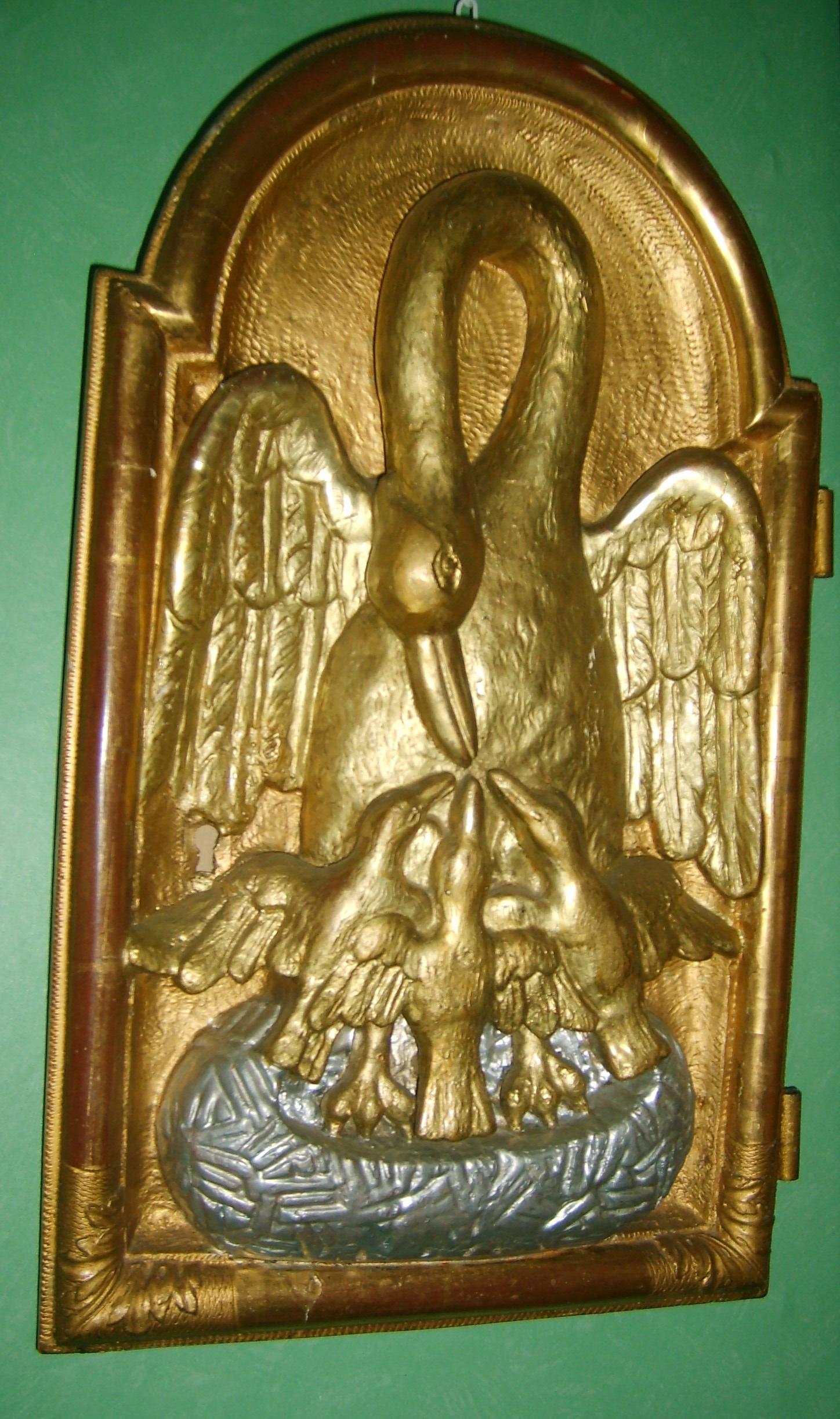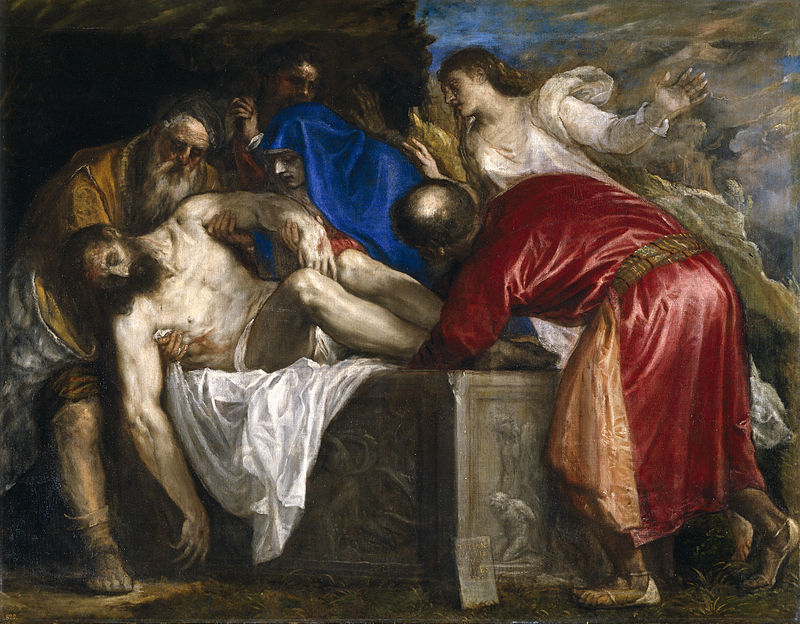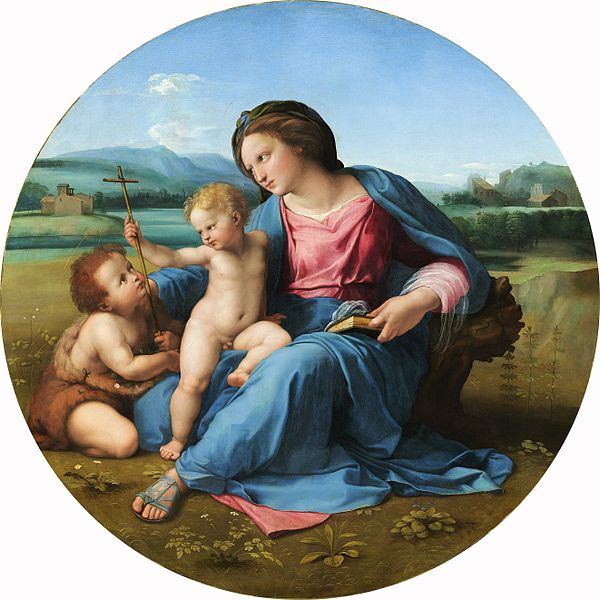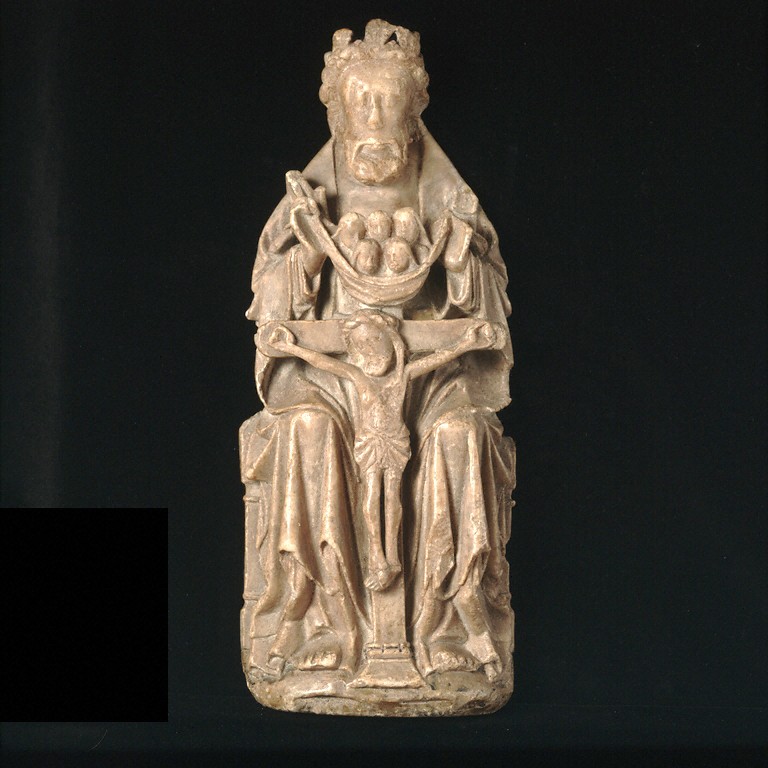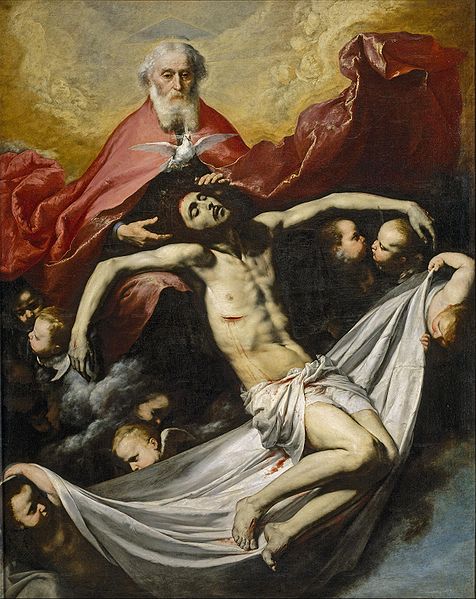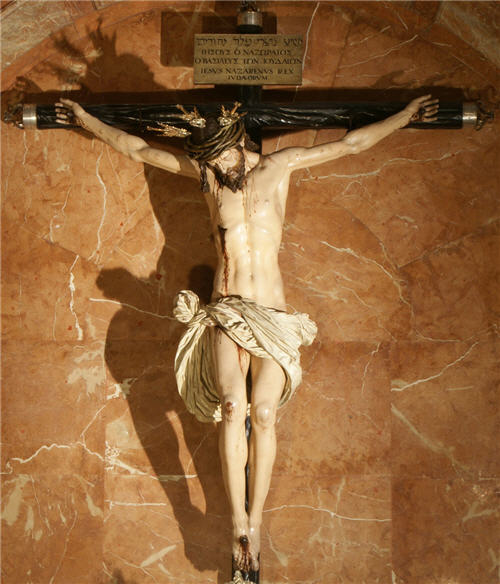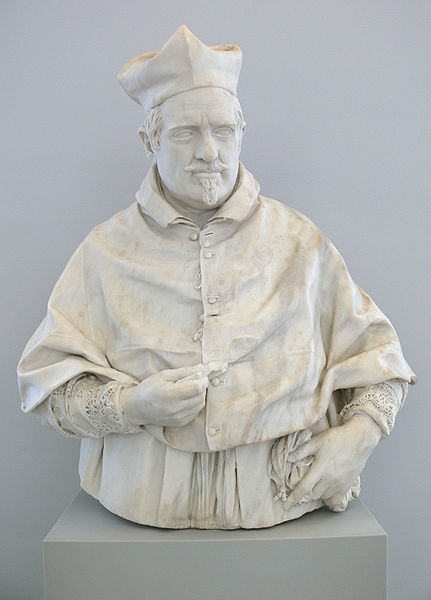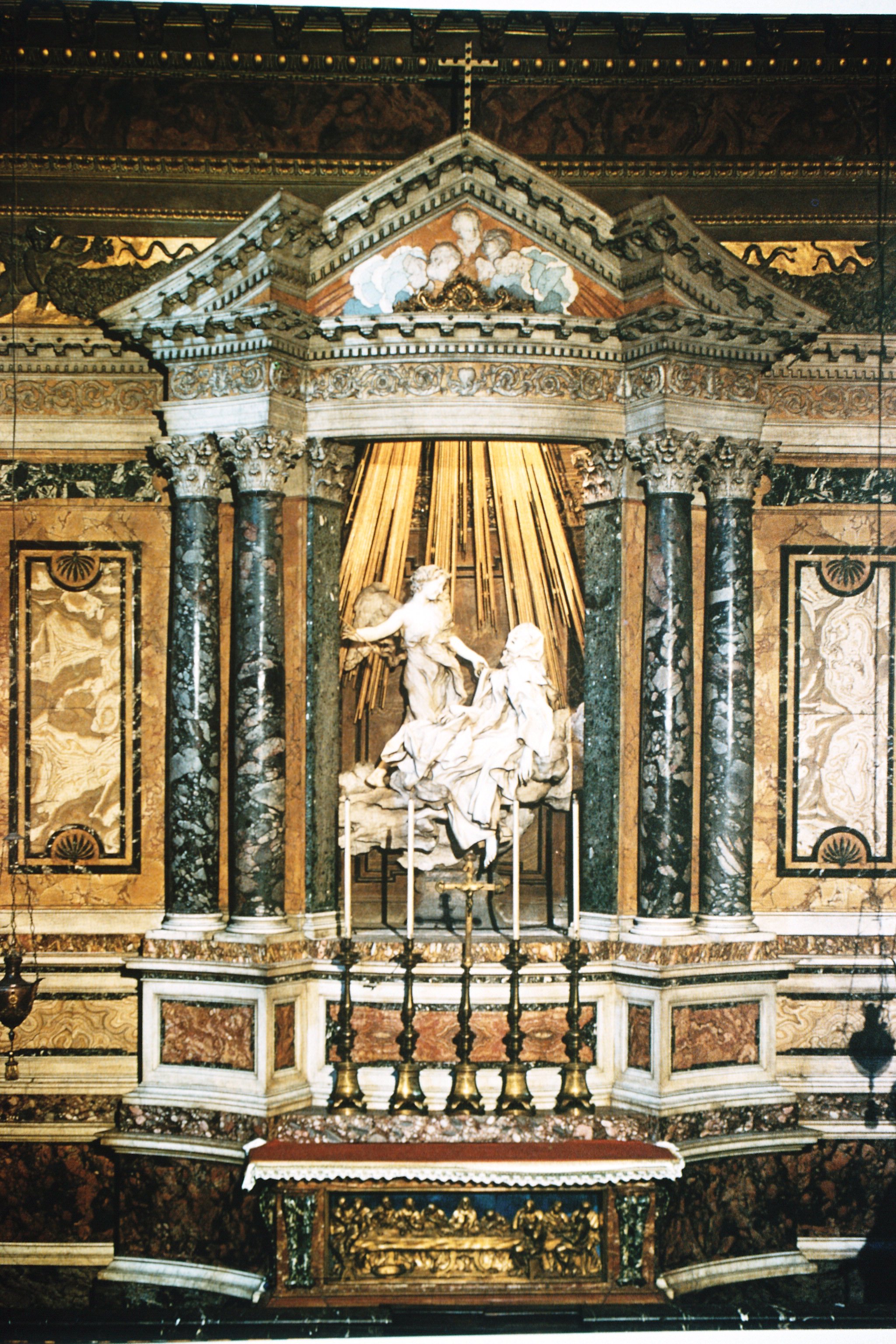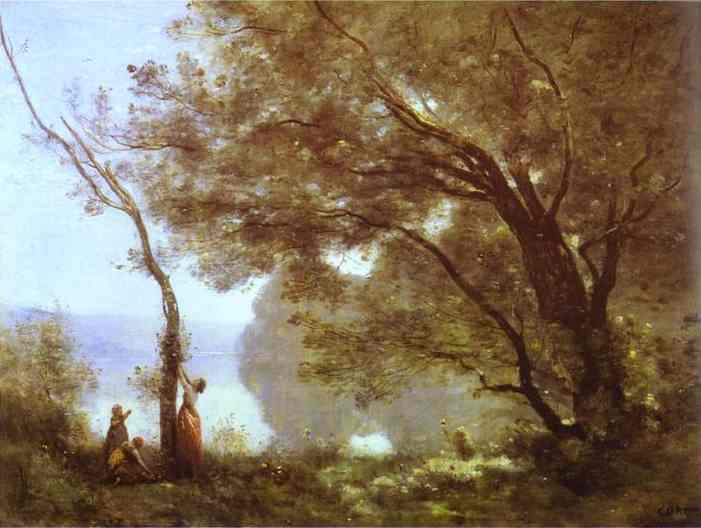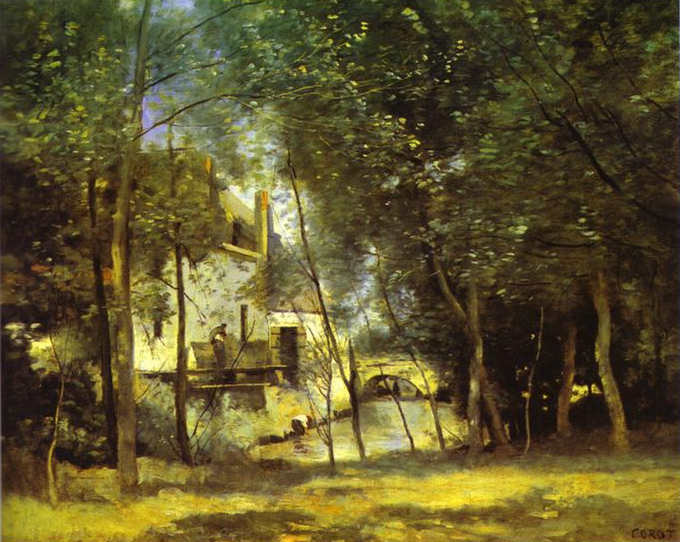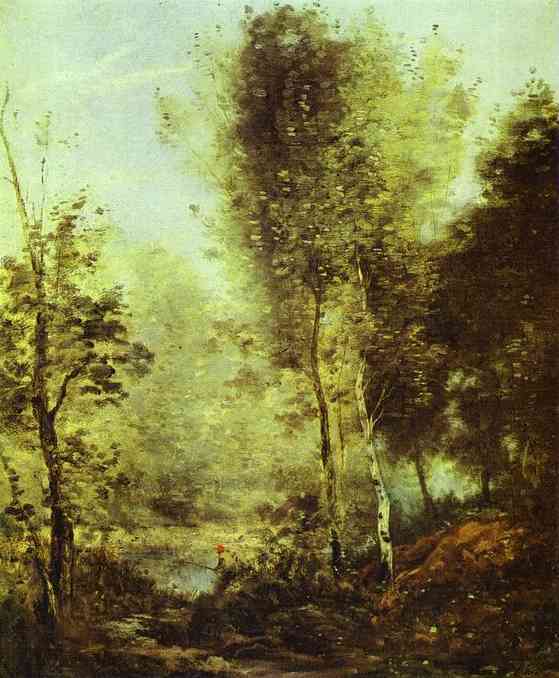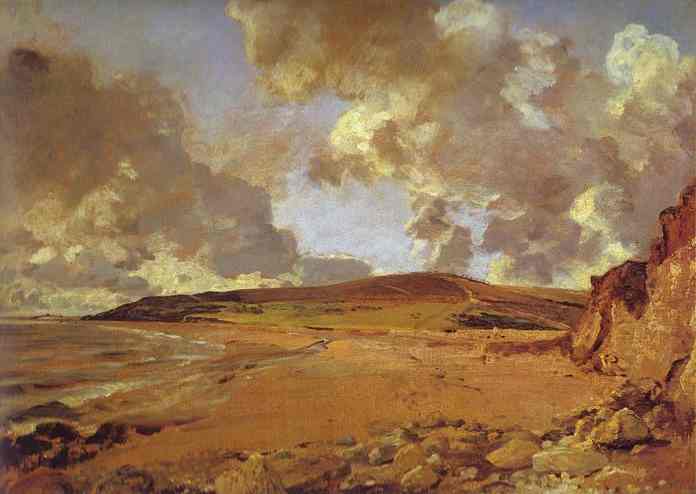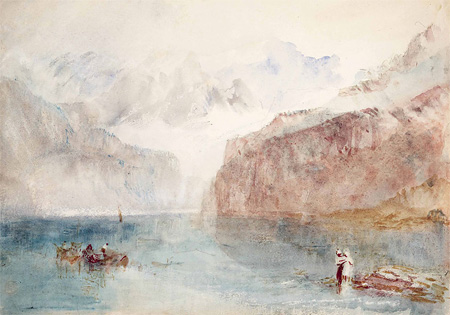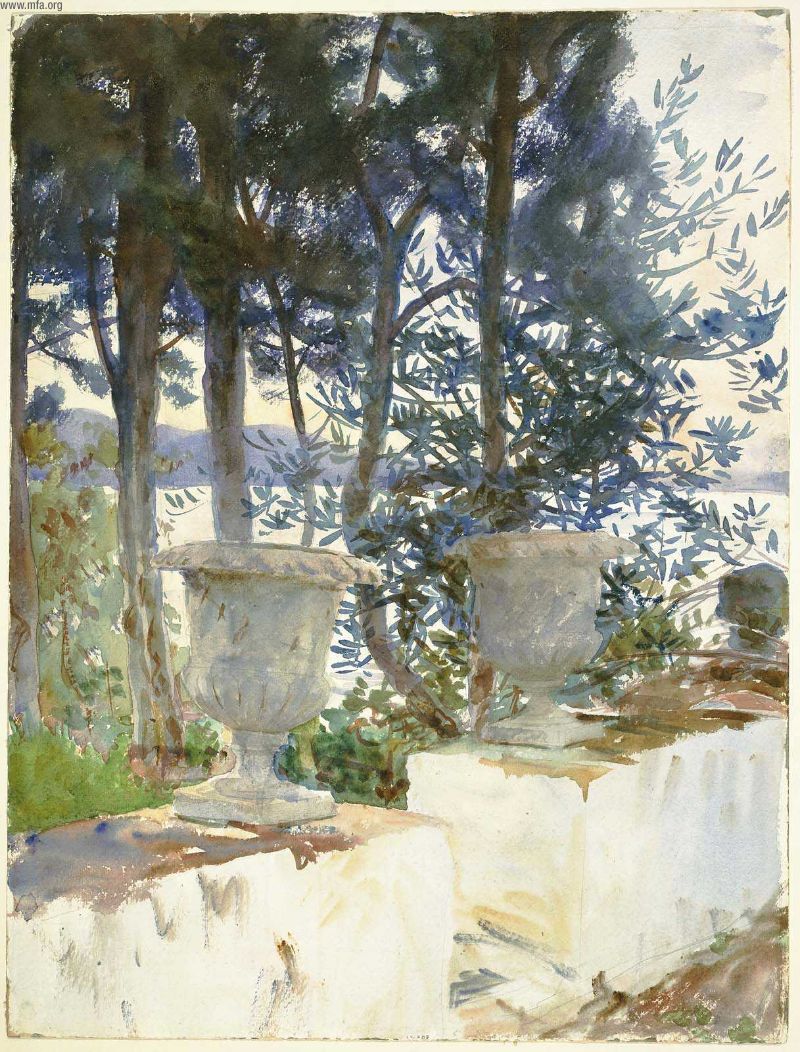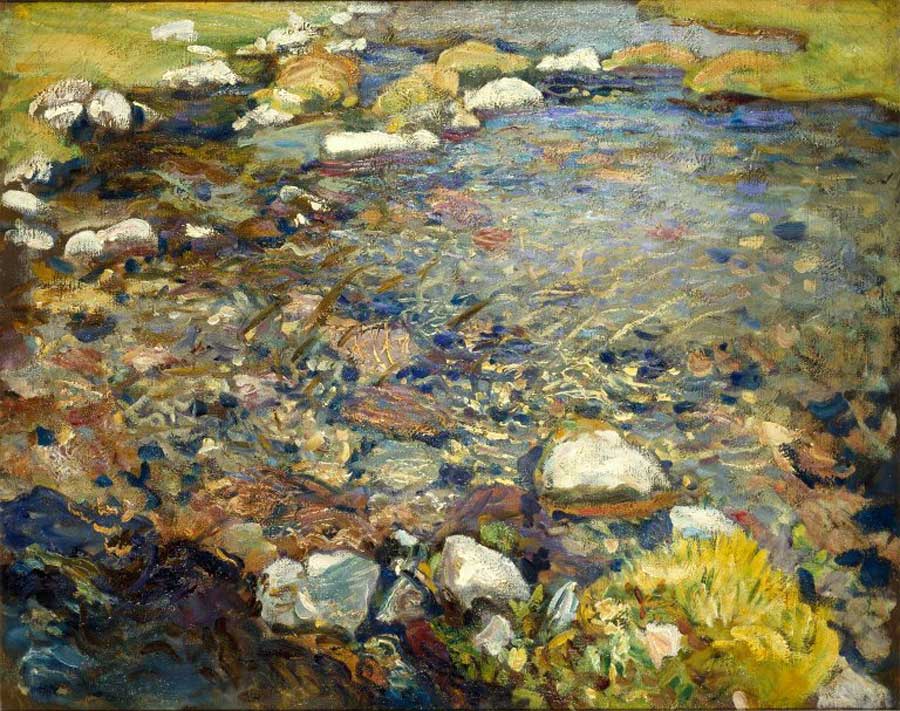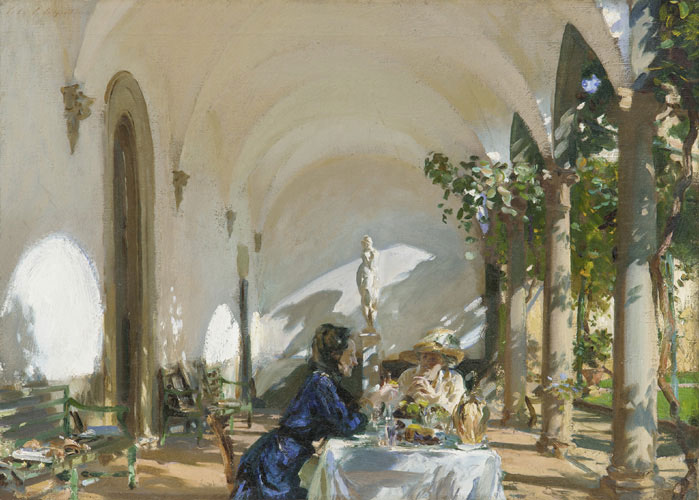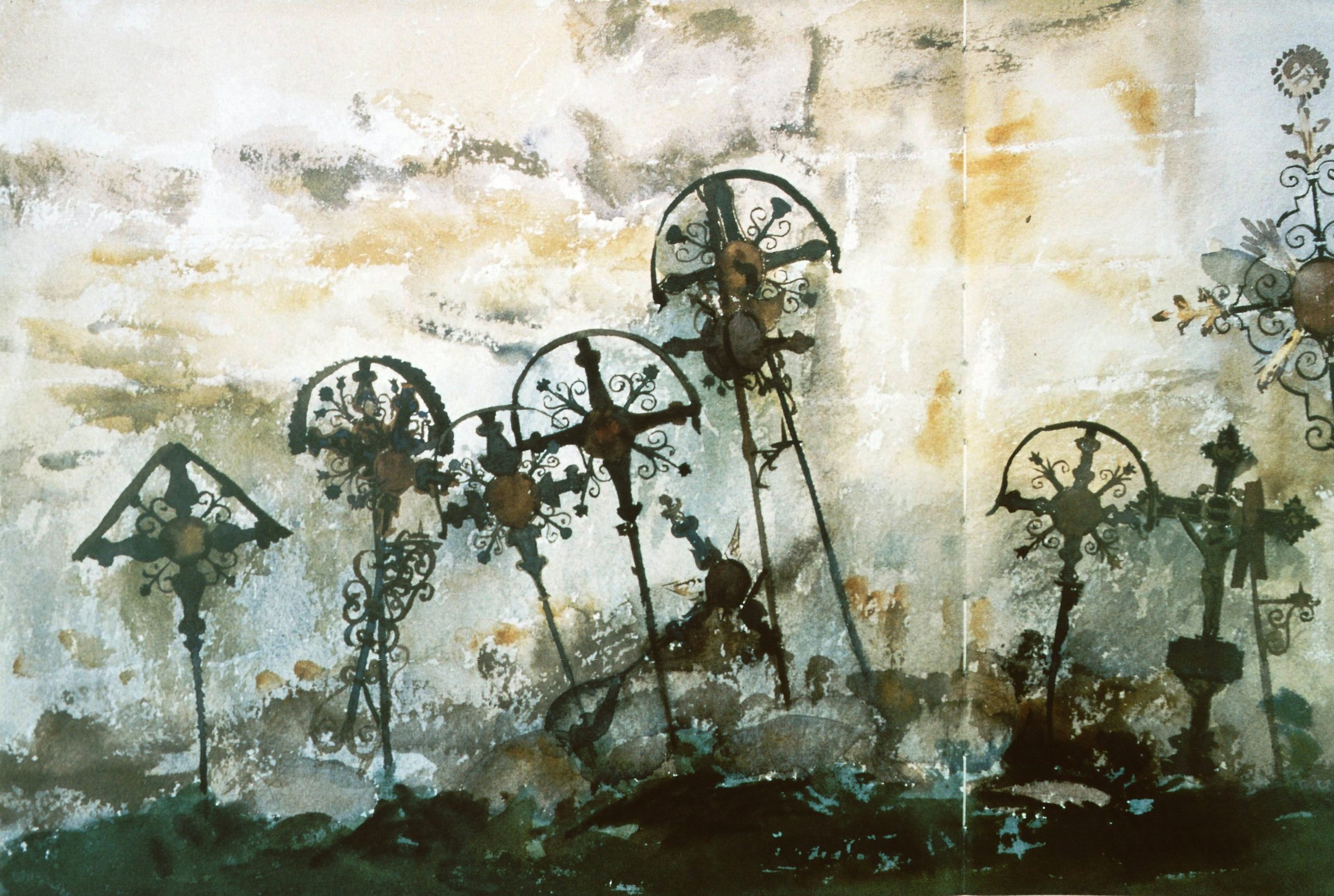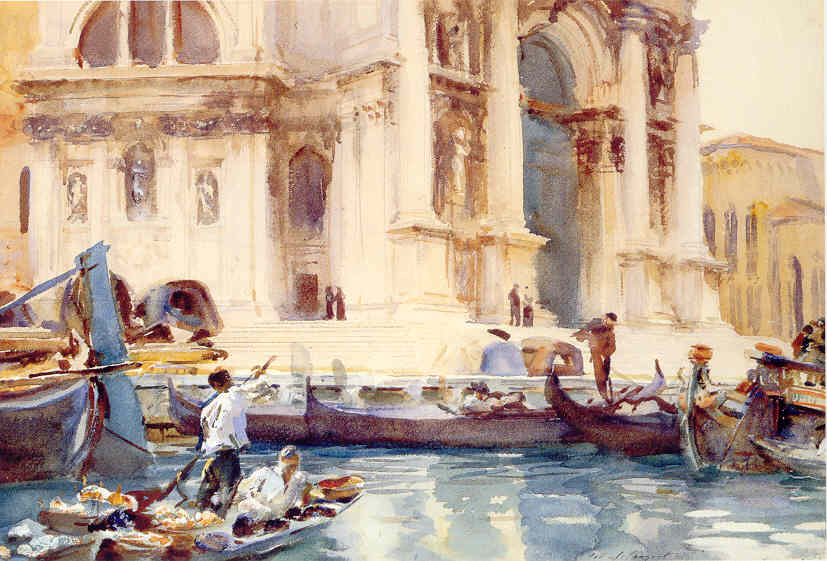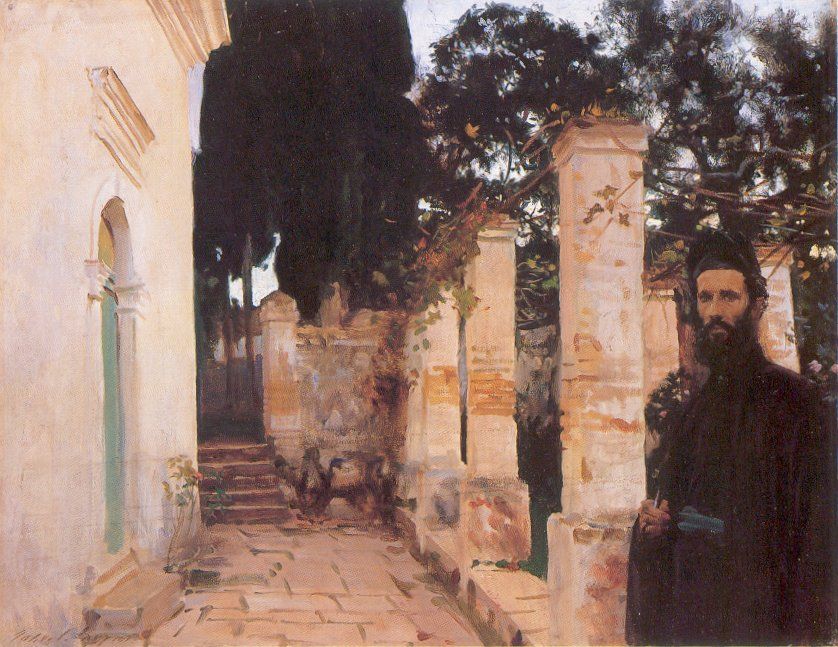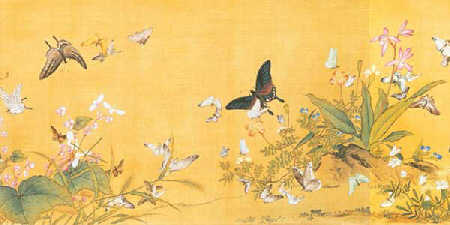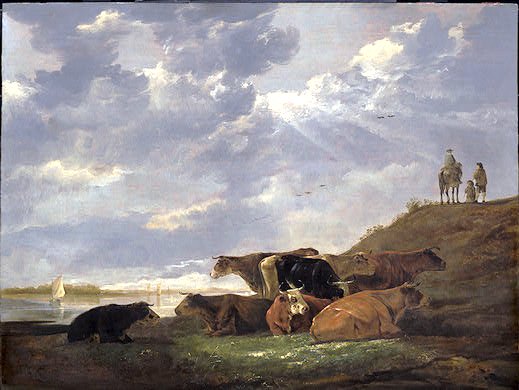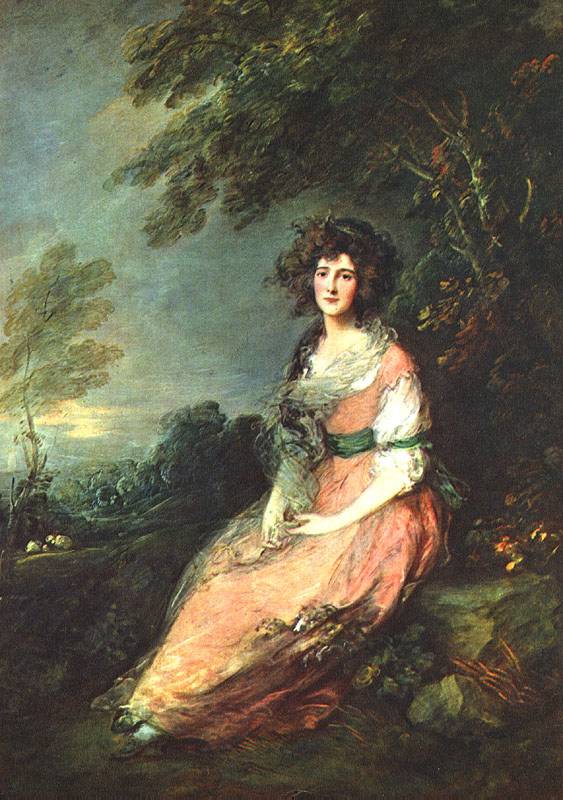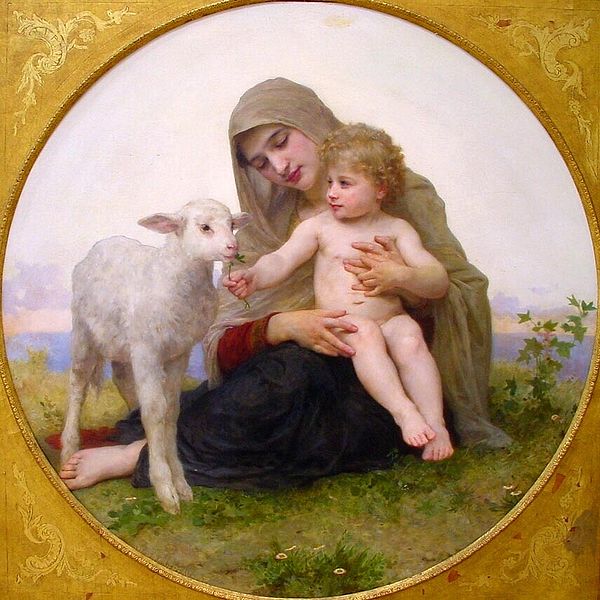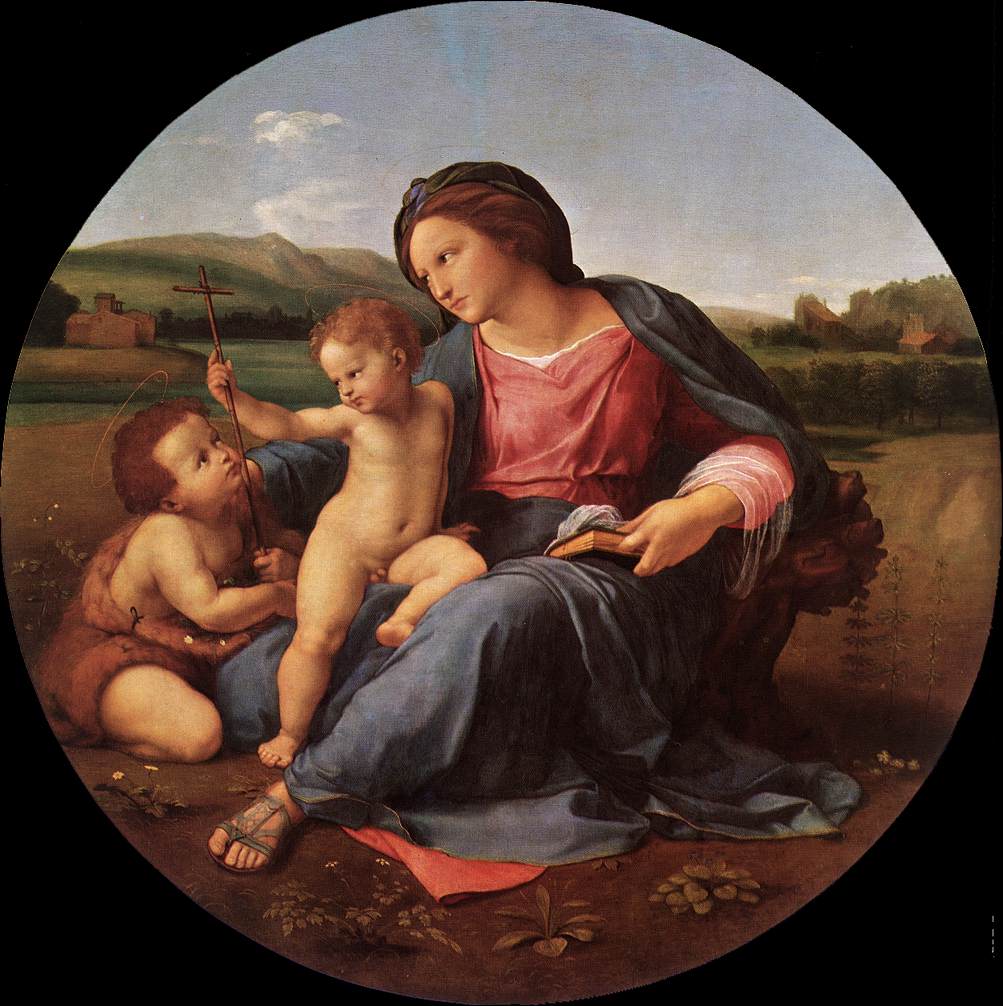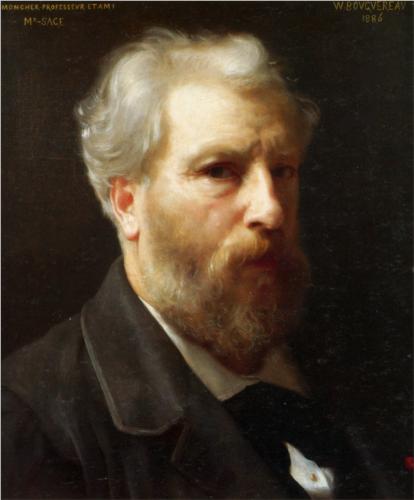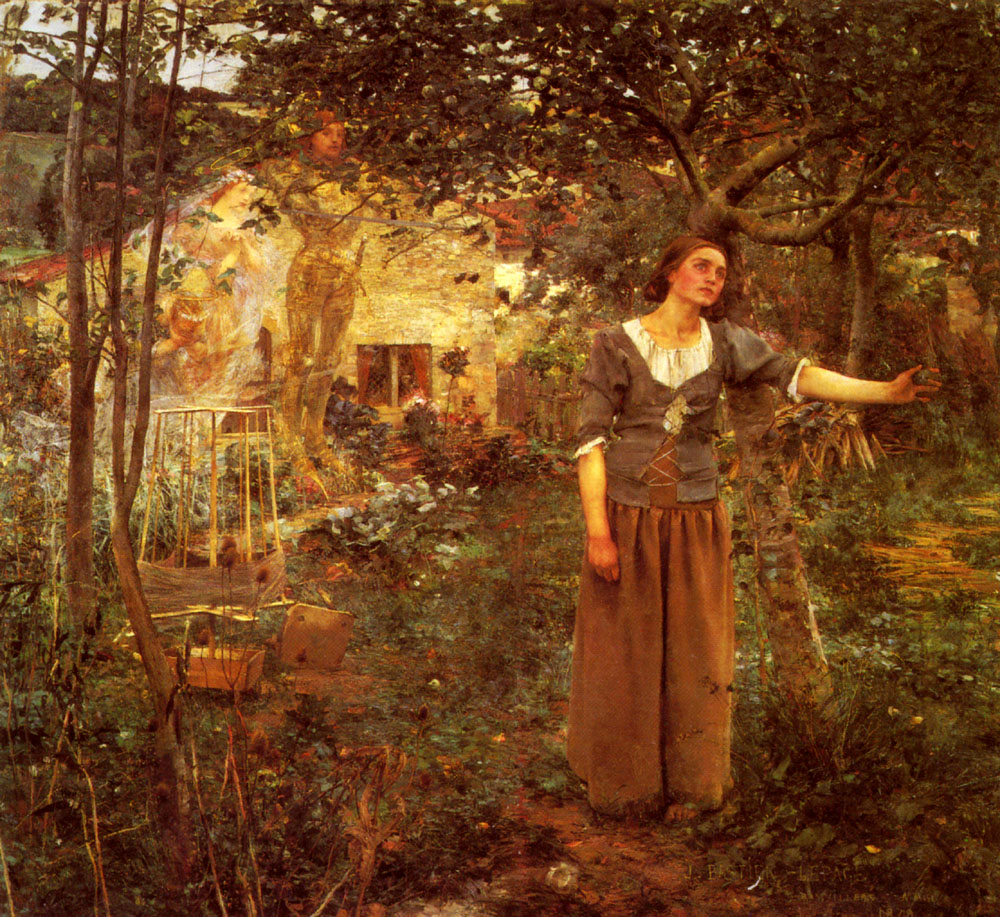Jerome held these two Jameses to be the same person, and this was certainly the prevailing opinion when the feast of Philip and James was instituted in 560. Nowadays, scholars prefer to divide them, in which case we might think of today as being the feast of Philip and James and James.
Preparation, Joy, and the Battle of Light and Darkness
The Baroque is Tridentine Art for the Latin Mass
if we want to inspire a powerful Counter-Modern or Counter-Postmodern Catholic culture today, then we need to reconnect today's worship with art so that people are engaged with it in the course of their worship. This means modifying our worship — even in the Latin Mass - and painting art that connects with people today.
Liturgical Art and Liturgical Man
Do We Need A New Christian Symbolism in Art - Aren't Pelicans and Peacocks Redundant?
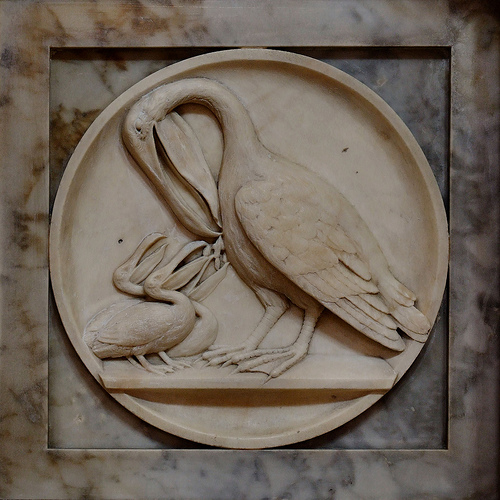 Should we resurrect the old Christian symbolism? Or are pelicans and peacocks just nonesense, like cabbages and kings.
Should we resurrect the old Christian symbolism? Or are pelicans and peacocks just nonesense, like cabbages and kings.
Is there a danger that trying to reestablish traditional Christian symbols in art would sow confusion rather that clarity? Lots of talks and articles about traditional Christian art I see discuss the symbolism of the iconographic content; for example, the meaning of the acacia bush (the immortality of the soul) or the peacock (again, immortality). This is useful if we have a printed (or perhaps for a few of you an original) Old Master in church or a prayer corner as it will enhance our prayer life when contemplating the image. But is this something that we ought to be aiming to reinstate the same symbolism in what we produce today? Should we seek to educate artists to include this symbolic language in their art?  If symbols are meant to communicate and clarify, they should be readily understood by those who see them. This might have been the case when they were introduced – very likely they reflected aspects of the culture at the time – and afterwards when the tradition was still living and so knowledge of this was handed on. But for most it isn’t true now. How many would recognize the characteristics of an acacia bush, never mind what it symbolizes? If you ask someone today who has not been educated in traditional Christian symbolism in art what the peacock means, my guess is that they are more likely to suggest pride, referring to the expression, ‘as proud as peacock’. So the use of the peacock would not clarify, in fact it would do worse than mystify, it might actually mislead. (The reason for the use of the peacock as a symbol of immortality, as I understand it, is the ancient belief that its flesh was incorruptible). So to reestablish this sign language would be a huge task. We would not only have to educate the artists, but also educate everyone for whom the art was intended to read the symbolism. If this is the case, why bother at all, it doesn’t seem to helping very much, and in the end it will always exclude those who are not part of the cognoscenti . This is exactly the opposite of what is desired: for the greater number, it would not draw them into contemplation of the Truth, but push them out. I think that the answer is that some symbols are worth persevering with, and some should be abandoned. First, it is part of our nature to ‘read’ invisible truths through what is visible. This does not only apply to painting. The whole of Creation is made by God as an outward ‘sign’ that points to something beyond itself to Him, the Creator. Blessed John Henry Newman put it in his sermon Nature and Supernature as follows: "The visible world is the instrument, yet the veil, of the world invisible – the veil, yet still partially the symbol and index; so that all that exists or happens visibly, conceals and yet suggests, and above all subserves, a system of persons, facts, and events beyond itself.” It is important to both to make use of this faculty that exists in us for just this purpose; and to develop it, increasing our instincts for reading the book of nature and in turn, our faith.
If symbols are meant to communicate and clarify, they should be readily understood by those who see them. This might have been the case when they were introduced – very likely they reflected aspects of the culture at the time – and afterwards when the tradition was still living and so knowledge of this was handed on. But for most it isn’t true now. How many would recognize the characteristics of an acacia bush, never mind what it symbolizes? If you ask someone today who has not been educated in traditional Christian symbolism in art what the peacock means, my guess is that they are more likely to suggest pride, referring to the expression, ‘as proud as peacock’. So the use of the peacock would not clarify, in fact it would do worse than mystify, it might actually mislead. (The reason for the use of the peacock as a symbol of immortality, as I understand it, is the ancient belief that its flesh was incorruptible). So to reestablish this sign language would be a huge task. We would not only have to educate the artists, but also educate everyone for whom the art was intended to read the symbolism. If this is the case, why bother at all, it doesn’t seem to helping very much, and in the end it will always exclude those who are not part of the cognoscenti . This is exactly the opposite of what is desired: for the greater number, it would not draw them into contemplation of the Truth, but push them out. I think that the answer is that some symbols are worth persevering with, and some should be abandoned. First, it is part of our nature to ‘read’ invisible truths through what is visible. This does not only apply to painting. The whole of Creation is made by God as an outward ‘sign’ that points to something beyond itself to Him, the Creator. Blessed John Henry Newman put it in his sermon Nature and Supernature as follows: "The visible world is the instrument, yet the veil, of the world invisible – the veil, yet still partially the symbol and index; so that all that exists or happens visibly, conceals and yet suggests, and above all subserves, a system of persons, facts, and events beyond itself.” It is important to both to make use of this faculty that exists in us for just this purpose; and to develop it, increasing our instincts for reading the book of nature and in turn, our faith.  However, coming back to the context of art again, some discernment should be used, I suggest. I would not be in favour of creating an arbitrarily self-consistent symbolism. The symbol must be rooted in truth. The symbolism in the iconographic tradition is very good at following this principle. This is best illustrated by considering the example of the halo. This is very well known as the symbol of sanctity in sacred art. There are very good reasons for this. The golden disc is a stylized representation of a glow of uncreated, divine light, shining out of the person. Even if this were not already a widely known symbol, it would be worth educating people about the meaning of it, because in doing so something more is revealed. When however, the representation of a halo develops into a disc floating above the head of the saint, as in Cosme Tura’s St Jerome, or even a hoop, as in Annibale Caracci’s Dead Christ Mourned, (both shown) then it seems to me that the symbol has become detached from its root. Neither could be seen as a representation of uncreated light. These latter two forms, therefore, should be discouraged.
However, coming back to the context of art again, some discernment should be used, I suggest. I would not be in favour of creating an arbitrarily self-consistent symbolism. The symbol must be rooted in truth. The symbolism in the iconographic tradition is very good at following this principle. This is best illustrated by considering the example of the halo. This is very well known as the symbol of sanctity in sacred art. There are very good reasons for this. The golden disc is a stylized representation of a glow of uncreated, divine light, shining out of the person. Even if this were not already a widely known symbol, it would be worth educating people about the meaning of it, because in doing so something more is revealed. When however, the representation of a halo develops into a disc floating above the head of the saint, as in Cosme Tura’s St Jerome, or even a hoop, as in Annibale Caracci’s Dead Christ Mourned, (both shown) then it seems to me that the symbol has become detached from its root. Neither could be seen as a representation of uncreated light. These latter two forms, therefore, should be discouraged.
Similarly, those symbols that are rooted in the gospels or in the actual lives of the saints should be encouraged and the effort should be made, I think, to preserve or, if necessary, reestablish them. The tongs and coal of the prophet Isaias relate to the biblical accounts of his life. The inclusion of these, will generate a healthy curiosity in those who don’t know it, and so might direct them to investigate scripture. The picture shown, is one of my own icons.

In contrast consider the peacock and the pelican. The peacock, as already mentioned, does not, we now know, have incorruptible flesh. The pelican is a symbol of the Eucharist based upon the erroneous belief in former times that pelicans feed their young with their own flesh. My first though is that these symbols should not be used should not be used, because the reason for their symbolism in invalid, given that we no longer believe it to be true. However, I will admit that I am torn by the fact that both of these are beautiful and striking images, even if based in myth. Also, it might be argued, and this is particularly true for the pelican, that to use it is not resurrecting an obscure medieval symbol. It is an ancient symbol certainly - and St Thomas Aquinas's hymn to the Eucharist, Adore te devote called Christ the 'pelican of mercy'. But it lasted well beyond that. It was very widely understood even 50 years ago. Awareness of it is still common nowadays amongst those who are interested in liturgy and sacred art. Perhaps an argument could be made that even when the reason for the use of symbol is based in myth, if that is known and understood, and when that symbol recognition is still widespread enough to be considered part of the tradition, it should be retained. We should also remember that modern science is not infallible, and we moderns could be those who are mistaken about the pelican! My Googling research (admittedly even less reliable than modern science) revealed that the coat of arms of Cardinal George Pell has the image of the pelican. If this is so, I imagine he would have something to say about the issue also!
Titian the trailblazer - showing us how to balance naturalism and symbolism
 Titian is one of the greats of Western art. He lived from about 1480 to 1576, in Venice, and was active almost right to the end of his life. He began painting in the period of the High Renaissance and when he died was in the latter part of the 16th century which was characterized by individual artistic styles collectively called 'mannerism'. Titian's style, though individual to him when he established it, was highly influential and much of what characterized the baroque tradition of the 17th century was derived from his work. In some ways he can be considered one of the pioneers of the baroque style that dominated in the 17th century. This is important because the baroque is the one artistic traditions that Pope Benedict describes, in his book, the Spirit of the Liturgy, as being an authentic liturgical tradition.
Some people may be surprised, as I was, to discover that the High Renaissance (the style of Leonardo, Michelangelo and Raphael from about 1490 to 1525) is not considered fully and authentically liturgical (ie right for the Catholic liturgy). This is not to say that there are not individual works of art from these great artists that might be appropriate, but that it was not yet a coherent tradition in which a theology of form had been fully worked out, as was later to happen for the baroque. Pope Benedict argues that for the most part it was too strongly influenced by the pagan art of classical Greece and Rome and reveals the self-obsessed negative aspects of classical in a way that is not fully Christian.
Titian is one of the greats of Western art. He lived from about 1480 to 1576, in Venice, and was active almost right to the end of his life. He began painting in the period of the High Renaissance and when he died was in the latter part of the 16th century which was characterized by individual artistic styles collectively called 'mannerism'. Titian's style, though individual to him when he established it, was highly influential and much of what characterized the baroque tradition of the 17th century was derived from his work. In some ways he can be considered one of the pioneers of the baroque style that dominated in the 17th century. This is important because the baroque is the one artistic traditions that Pope Benedict describes, in his book, the Spirit of the Liturgy, as being an authentic liturgical tradition.
Some people may be surprised, as I was, to discover that the High Renaissance (the style of Leonardo, Michelangelo and Raphael from about 1490 to 1525) is not considered fully and authentically liturgical (ie right for the Catholic liturgy). This is not to say that there are not individual works of art from these great artists that might be appropriate, but that it was not yet a coherent tradition in which a theology of form had been fully worked out, as was later to happen for the baroque. Pope Benedict argues that for the most part it was too strongly influenced by the pagan art of classical Greece and Rome and reveals the self-obsessed negative aspects of classical in a way that is not fully Christian.
As a young man Titian trained during the High Renaissance and the influence of this can be seen in this early painting of his, the Enthronement of St Mark. At the feet of St Mark are Ss Cosmas and Damien on the left, and St Sebastien and St Roch on the right. This was painted in 1510 and one could be forgiven for thinking it was painted by Raphael. Notice how sharply defined all the figures and all the details are, even the floor tiles.
If you compare this with the following paintings we see how his work changed as he got older. The first is Cain and Abel painted in 1543; and the second is the entombment of Christ, painted in 1558. In the latter Joseph of Arimathea, Nicodemus and the Virgin Mary take Christ in the tomb watched by Mary Magdalene and Saint John the Evangelist.
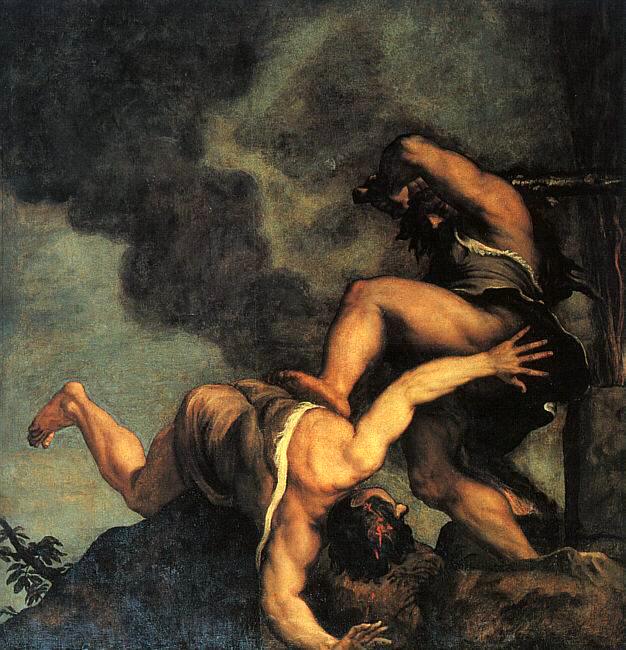
We can see how, in contrast to the first painted how diffuse and lacking in color much each painting is. The edges are blurred in many places and only certain areas have bright or naturalistic color. Those areas of primary focus are painted with sharper edges and with bright colors. This is done to draw our attention to the important part of the composition. He cannot apply bright color to the figure of Christ but notice how he uses the bright colors from the clothes of the three figures who are carrying him to frame his figure. In contrast the two figures in the background are depleted of color and detail. He wants us to be aware of them, but not in such a way that they detract from the most important figure. He uses the white cloth draped over the tomb in the same way, making sure that the sharpest contrast in tone, light to dark is between this and the shadow of the tomb. They eye is naturally drawn to those areas where dark and light meet and this is how Titian draws our gaze onto Christ.
It is suggested that this looseness of style in Titian's later works occured because as his eyesight declined, he was unable to paint as precisely as he had done as a young man. This may well have been what forced him to work differently, but if so, all I can say is, my, how he accomodated his handicap so as to create something greater as a result!
If we go forward now to early 17th century Rome, it is the artist Caravaggio who is often credited with creating the characteristic visual vocabulary of exaggerated light and dark of the baroque style. We have seen deep shadow and bright light before this time, but Caravaggio exaggerated it and embued it with spiritual meaning in a new way. The shadow represents the presence of evil, sin, and suffering in this fallen world; and it is contrasted with the light which represents the Light, Christ, who offers Christian hope that transcends such suffering.
This visual vocabulary of light and dark can be seen in the painting above. Notice how it is so pronounced that in this example we do not see any background landscape; all apart from the figures is bathed in shadow. One thing that Caragaggio does retain from the visual style of the High Renaissance is that generally his edges are sharp and well defined, even if partially obscured by shadow. Other artists looked at this and while adopting Caravaggio's language of light and dark, incorporated also the controlled blurring edges that characterized Titian. What we think of as authentic baroque art is a hybrid of the two.
Look at the following painting by the Flemish artist, Van Dyck, St Francis in meditation, painted in 1632:
We can see how much he has taken from Titian in this painting. Van Dyck trained under Rubens. As a young man in 1600, Rubens travelled to Italy where he lived for eight years. His travels took him to Venice (where he saw the work of Titian), Florence and Rome (where much of Caravaggio's work was). He was influenced strongly by both and passed on these influences to his star pupil.
Sassoferrato's Virgin at Prayer - for the Nativity of the Blessed Virgin Mary
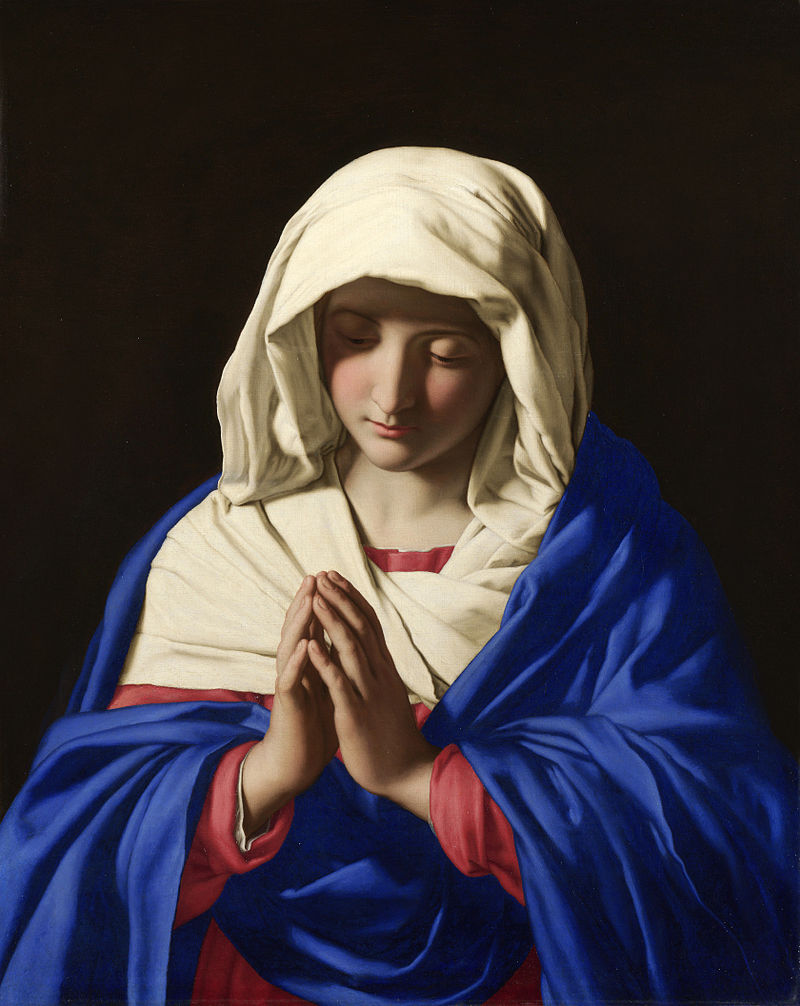 For today's Feast of the Birthday of the Blessed Virgin Mary here is the Virgin at Prayer by the Italian artist Giovanni Battista Salvi da Sassoferrato who is generally known simply as Sassoferrato. He lived from 1609 to 1685.
Records of the commemoration of the Nativity of the Blessed Virgin Mary on September 8th go back to the 6th century. The Solemnity of the Immaculate Conception of Mary was later fixed at December 8, nine months prior.
For today's Feast of the Birthday of the Blessed Virgin Mary here is the Virgin at Prayer by the Italian artist Giovanni Battista Salvi da Sassoferrato who is generally known simply as Sassoferrato. He lived from 1609 to 1685.
Records of the commemoration of the Nativity of the Blessed Virgin Mary on September 8th go back to the 6th century. The Solemnity of the Immaculate Conception of Mary was later fixed at December 8, nine months prior.
There is a commentary on the Feast from the following information is drawn, here, by Fr Matthew Mauriello: 'The primary theme portrayed in the liturgical celebration of this feast day is that the world had been in the darkness of sin and with the arrival of Mary begins a glimmer of light. That light which appears at Mary's holy birth preannounces the arrival of Christ, the Light of the World. Her birth is the beginning of a better world: "Origo mundi melioris." The antiphon for the Canticle of Zechariah at Morning Prayer expressed these sentiments in the following way: "Your birth, O Virgin Mother of God, proclaims joy to the whole world, for from you arose the glorious Sun of Justice, Christ our God; He freed us from the age-old curse and filled us with holiness; he destroyed death and gave us eternal life.
'The second reading of the Office of Readings is taken from one of the four sermons written by St. Andrew of Crete ( 660-740 ) on Mary's Nativity. He too used the image of light: "...This radiant and manifest coming of God to men needed a joyful prelude to introduce the great gift of salvation to us...Darkness yields before the coming of light."
This painting, like the painting of Gregory the Great by Vignali, described last week, is in the baroque style of the 17th century. Again, we see the sharp contrast between light and dark symbolizing the Light overcoming the darkness, and again like the Vignali, the face is in partial shadow ensuring that this is distinct in style from a portrait (I described the reasons behind this in more detail in the earlier posting). There is an additional element here in the portrayal of the face that was not so strongly present in Vignali's painting. The facial features are highly idealized and bear the likeness of the ancient Greek classical ideal.
 Sassoferrato's training and influences were all in the classical baroque school. This is a stream within baroque art that looks to Raphael from 100 years before as its inspiration. Raphael's faces, in turn, strongly reflected the classical Greek ideal and this was picked up by the Caraccis in the late 16th century (most famously Annibale) who founded a school from which most of line of influential figures in the classical baroque line emerged.
Sassoferrato's training and influences were all in the classical baroque school. This is a stream within baroque art that looks to Raphael from 100 years before as its inspiration. Raphael's faces, in turn, strongly reflected the classical Greek ideal and this was picked up by the Caraccis in the late 16th century (most famously Annibale) who founded a school from which most of line of influential figures in the classical baroque line emerged.
All Christian sacred art must have a balance of idealism, which points to what we might become; and naturalism which roots the image in the particular and what we see and know in the here and now. The different styles of Christian sacred art look different from each other because they look to different sources for their ideal, and because of the exact balance of idealism and naturalism they reflect. Baroque classicism is called so to distinguish it from 'baroque naturalism' in which, though still partially idealized in accordance with what is good for Christian sacred art, has a greater emphasis on natural appearances. Ribera would be an example of the naturalistic school and Poussin was one of the most famous proponents of baroque classicism.
We can see the similarities in the facial features of the Sassoferrato Virgin, Raphael's Alba Madonna (which I describe in more detail in a posting here) and the ancient Greek statue the Venus of Arles from the Louvre. This strong idealization is another way that the artist ensures that portrayal of Our Lady is a piece of sacred art and avoids it looking like a portrait of the girl from next door dressed in historical costume.
Here is the Venus of Arles:
We can see the difference between the way in which sacred art and mundane art are painted by contrasting what these works with Sassoferrato's self portrait. Notice how in the portrait the image engages the viewer much more directly and we look deeply into his eyes, the deep shadow is absent and background is blue rather than black so the contrast between light and dark is not so pronounced. There is still some shadow in the face certainly - this necessary in order to describe form - but it is not so marked. Also there is not such an obvious fusion of the natural features of the face with those of the Greek ideal as we would see in the sacred art.
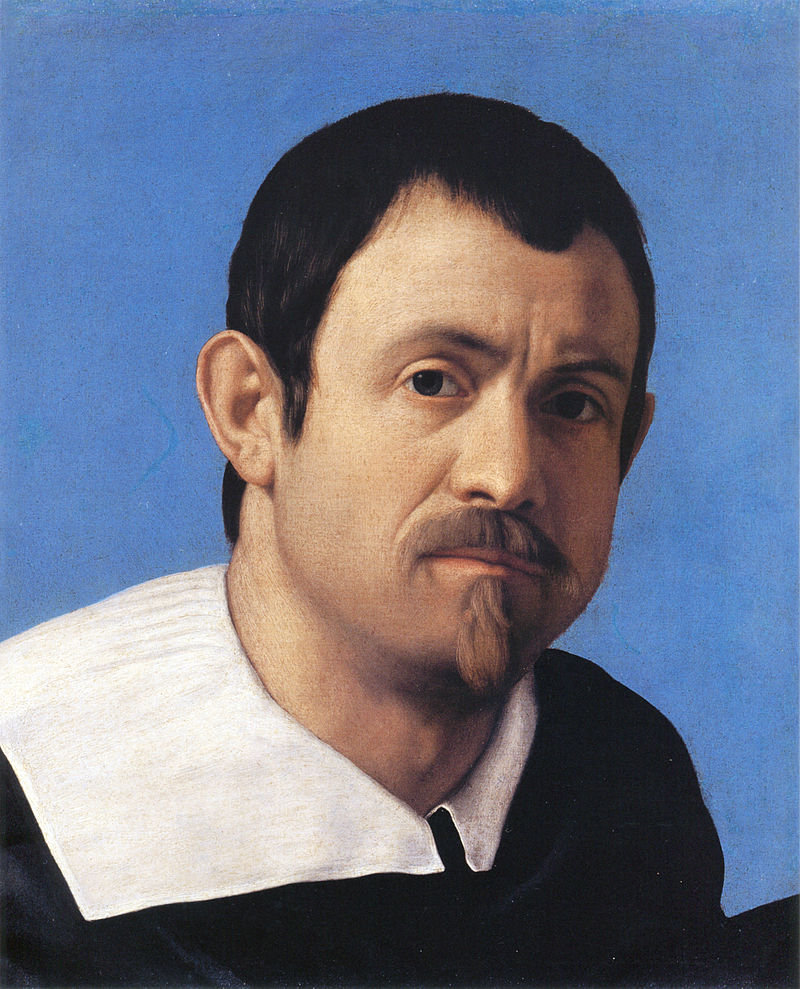 Sassoferrato's Virgin is in the National Gallery in London and I have a great fondness for it, even long before my conversion, it was one of those paintings that I always made a point of going to look at every time I visited the gallery. As a gallery that has no entrance fee, I often used to just drop in for 20 minutes on my way home from work, or even sometimes just to escape the rain! The peaceful repose and expression of Our Lady, which is even more apparent if you see the original, always drew me in.
Sassoferrato's Virgin is in the National Gallery in London and I have a great fondness for it, even long before my conversion, it was one of those paintings that I always made a point of going to look at every time I visited the gallery. As a gallery that has no entrance fee, I often used to just drop in for 20 minutes on my way home from work, or even sometimes just to escape the rain! The peaceful repose and expression of Our Lady, which is even more apparent if you see the original, always drew me in.
— ♦—
My book the Way of Beauty is available from Angelico Press and Amazon.
—JAY W. RICHARDS, Editor of the Stream and Lecturer at the Business School of the Catholic University of America said about it: “In The Way of Beauty, David Clayton offers us a mini-liberal arts education. The book is a counter-offensive against a culture that so often seems to have capitulated to a ‘will to ugliness.’ He shows us the power in beauty not just where we might expect it — in the visual arts and music — but in domains as diverse as math, theology, morality, physics, astronomy, cosmology, and liturgy. But more than that, his study of beauty makes clear the connection between liturgy, culture, and evangelization, and offers a way to reinvigorate our commitment to the Good, the True, and the Beautiful in the twenty-first century. I am grateful for this book and hope many will take its lessons to heart.”
Baroque case study and meditation: Pietro da Cortona's Christ Appearing to Mary Magadalene
 I will post an article next week about Christian environmentalism. I believe that this scene, portrayed in this beautiful example of 17th baroque painting, in which Mary Magdalene sees Christ in the garden and mistaking him for the gardener gives us insights into the Christian understanding of man's relationship with the rest of creation, and so to a Christian environmentalism. You can read how when it comes out on Monday.
Here is the account from St John's gospel, Chapter 20: 11 Now Mary stood outside the tomb crying. As she wept, she bent over to look into the tomb 12 and saw two angels in white, seated where Jesus’ body had been, one at the head and the other at the foot. 13 They asked her, “Woman, why are you crying?” “They have taken my Lord away,” she said, “and I don’t know where they have put him.” 14 At this, she turned around and saw Jesus standing there, but she did not realize that it was Jesus. 15 He asked her, “Woman, why are you crying? Who is it you are looking for?” Thinking he was the gardener, she said, “Sir, if you have carried him away, tell me where you have put him, and I will get him.” 16 Jesus said to her, “Mary.” She turned toward him and cried out in Aramaic, “Rabboni!” (which means “Teacher”). 17 Jesus said, “Do not hold on to me, for I have not yet ascended to the Father. Go instead to my brothers and tell them, ‘I am ascending to my Father and your Father, to my God and your God.’”
I will post an article next week about Christian environmentalism. I believe that this scene, portrayed in this beautiful example of 17th baroque painting, in which Mary Magdalene sees Christ in the garden and mistaking him for the gardener gives us insights into the Christian understanding of man's relationship with the rest of creation, and so to a Christian environmentalism. You can read how when it comes out on Monday.
Here is the account from St John's gospel, Chapter 20: 11 Now Mary stood outside the tomb crying. As she wept, she bent over to look into the tomb 12 and saw two angels in white, seated where Jesus’ body had been, one at the head and the other at the foot. 13 They asked her, “Woman, why are you crying?” “They have taken my Lord away,” she said, “and I don’t know where they have put him.” 14 At this, she turned around and saw Jesus standing there, but she did not realize that it was Jesus. 15 He asked her, “Woman, why are you crying? Who is it you are looking for?” Thinking he was the gardener, she said, “Sir, if you have carried him away, tell me where you have put him, and I will get him.” 16 Jesus said to her, “Mary.” She turned toward him and cried out in Aramaic, “Rabboni!” (which means “Teacher”). 17 Jesus said, “Do not hold on to me, for I have not yet ascended to the Father. Go instead to my brothers and tell them, ‘I am ascending to my Father and your Father, to my God and your God.’”
In this painting, painted around 1645 by the Italian Pietro da Cortona, he uses the classic elements of the baroque style, the deep shadow contrasted with the light, which represents, in this case literally, the Light, that overcomes the darkness. He ensures that the main focus is on the person of Christ by retaining the sharpest focus and the most colour around him and his garments. Much of the parts in the periphery of the painting are painted in monochrome (in one colour, in this case sepia) and are blurred. This draws the eye to the most important part of the painting that is lighter, more coloured, and in sharper focus.. The only other part which is in light is the upper body and face of Mary Magdalene. The deep shadow and murky light in the rest of the composition, which is so prevalent in baroque painting (the style that originated in the 17th century) is appropriate for this - we are told by John that this took place 'early on the first day of the week' that is Sunday. The medium in which it is painted - oil on canvas - is ideal for for this shadowy light. It allow the smooth blending of tone and colour over long distances (in contrast with egg tempera, the medium of icons which is very difficult to blend).
All of these stylistic elements are derived from a theology whereby the artist is seeking to represent heavenly and supernatural truths via the visual. In order to do so he does not paint photographically, but deliberately alters the appearances from what is seen so that we infer invisible truths also. The theology behind the style of baroque painting and the dynamic by which we pray with it in the liturgy is described in detail in my book, the Way of Beauty.
The artist, Pietro da Cortona was one of the leading artists of the Italian baroque and was seen in his time as a rival in fame and reputation of Bernini (who is more well known today). Like Bernini he was an architect as well as an artist (Bernini being primarily a sculptor). He lived from 1596-1669. Below we see the church of Santi Luca e Martina in Rome, which was designed by Cortona.
— ♦—
My book the Way of Beauty is available from Angelico Press and Amazon.
—JAY W. RICHARDS, Editor of the Stream and Lecturer at the Business School fo the Catholic University of America said about it: “In The Way of Beauty, David Clayton offers us a mini-liberal arts education. The book is a counter-offensive against a culture that so often seems to have capitulated to a ‘will to ugliness.’ He shows us the power in beauty not just where we might expect it — in the visual arts and music — but in domains as diverse as math, theology, morality, physics, astronomy, cosmology, and liturgy. But more than that, his study of beauty makes clear the connection between liturgy, culture, and evangelization, and offers a way to reinvigorate our commitment to the Good, the True, and the Beautiful in the twenty-first century. I am grateful for this book and hope many will take its lessons to heart.”
Should We Paint God the Father?
 One of the most famous pieces of sacred art that exists is Michelangelo’s fresco, in the Sistine Chapel, of God giving the spark of life to Adam. Despite its popularity and familiarity, I had often wondered about the validity of representing God the Father.
My own instincts run against the idea of portraying God the Father in a painting at all, even when I was a child (I always thought that the white-whiskered God looked more like God the Grandfather, than God the Father). Later on in life, this was reinforced by the fact that my icon painting training led me to believe that it was wrong. I was pretty sure, but not certain, that it was not part of the tradition. Certainly, I have never painted an icon of God the Father. Furthermore, the theology of Theodore the Studite in regard to sacred imagery, which is accepted by both Eastern and Western Churches, bases the argument for the creation of any figurative art upon the fact that we can portray the person of Christ as man. The person of God the Father is a spiritual being and most certainly not man. This would seem to suggest that we should not portray the Father as man either.
One of the most famous pieces of sacred art that exists is Michelangelo’s fresco, in the Sistine Chapel, of God giving the spark of life to Adam. Despite its popularity and familiarity, I had often wondered about the validity of representing God the Father.
My own instincts run against the idea of portraying God the Father in a painting at all, even when I was a child (I always thought that the white-whiskered God looked more like God the Grandfather, than God the Father). Later on in life, this was reinforced by the fact that my icon painting training led me to believe that it was wrong. I was pretty sure, but not certain, that it was not part of the tradition. Certainly, I have never painted an icon of God the Father. Furthermore, the theology of Theodore the Studite in regard to sacred imagery, which is accepted by both Eastern and Western Churches, bases the argument for the creation of any figurative art upon the fact that we can portray the person of Christ as man. The person of God the Father is a spiritual being and most certainly not man. This would seem to suggest that we should not portray the Father as man either.
 I quietly suspected that the white-bearded God of Michelangelo or William Blake or even my favourite baroque artist Velazquez were all in error, his Crowning of the Virgin by the Trinity is to the right. I wasn't too worried about Blake, an eccentric non-Catholic, but Michelangelo and Velazquez?
I quietly suspected that the white-bearded God of Michelangelo or William Blake or even my favourite baroque artist Velazquez were all in error, his Crowning of the Virgin by the Trinity is to the right. I wasn't too worried about Blake, an eccentric non-Catholic, but Michelangelo and Velazquez?
I was approached recently to do a commission that involves the portrayal of the Father. Rather than reject it out of hand, I thought I had better find out where the Church stands on this.
Here’s what my first investigations have revealed. For the first thousand years or so of Christianity, East and West, there was little portrayal of the Father figuratively. Then images started to appear in both the Eastern and Western traditions, though it was more common in the West.
There are two simple arguments that I have found for the representation of the Father: the first is that Christ said in John 14:9 that whoever has seen me has seen the Father. This would seem to open up to a representation of the Father as the Son. So, one could say, seeing an image of the Sacred Heart of Jesus is also seeing one of the Sacred Heart of the Father, with the heart of the Father understood as a symbol of His love.
![]() The second is that the white-bearded figure, which we are all familiar with is the Ancient of Days in the book of Daniel (7:9, 13, 22). This is the source of so many familiar portrayals of the Father. In the East there is a tradition known as the New Testament Trinity. This title would distinguish it from the Hospitality of Abraham (in which three angelic strangers represent the three persons of the Trinity). Right is a Greek Orthodox New Testament Trinity from the ceiling of the entrance Vatopedion Monastery at Agion Oros (Mount Athos), Greece. The Catholic Church, allows for the interpretation of the Ancient of Days as the Father, which justifies the portrayal of the Father. (I have been told that Pope Benedict XIV [fourteenth, not sixteenth!] in 1745 pronounced this, though beyond a Wikipedia reference I have not been able to validate this). It also allows for the interpretation of the Ancient of Days as Christ. The Russian Orthodox Church, since the synod of Moscow in 1667 has forbidden the portrayal of God the Father as a man. Consistent with this it interprets the Ancient of Days strictly as the Son. It is this decision of the pronouncement by the Russian church that gave me the idea, wrongly, that it had never been part of the Eastern tradition and that the whole present Eastern Church forbids it.
The second is that the white-bearded figure, which we are all familiar with is the Ancient of Days in the book of Daniel (7:9, 13, 22). This is the source of so many familiar portrayals of the Father. In the East there is a tradition known as the New Testament Trinity. This title would distinguish it from the Hospitality of Abraham (in which three angelic strangers represent the three persons of the Trinity). Right is a Greek Orthodox New Testament Trinity from the ceiling of the entrance Vatopedion Monastery at Agion Oros (Mount Athos), Greece. The Catholic Church, allows for the interpretation of the Ancient of Days as the Father, which justifies the portrayal of the Father. (I have been told that Pope Benedict XIV [fourteenth, not sixteenth!] in 1745 pronounced this, though beyond a Wikipedia reference I have not been able to validate this). It also allows for the interpretation of the Ancient of Days as Christ. The Russian Orthodox Church, since the synod of Moscow in 1667 has forbidden the portrayal of God the Father as a man. Consistent with this it interprets the Ancient of Days strictly as the Son. It is this decision of the pronouncement by the Russian church that gave me the idea, wrongly, that it had never been part of the Eastern tradition and that the whole present Eastern Church forbids it.
 There is a Western tradition of portrayal of the trinity in a type known as the Throne of Mercy, in which the Father sits on his throne and presents his crucified son to the viewer while a dove rests on the cross or hovers just above it. It was this that was explicitly mentioned by Benedict XIV. A 16th century German version is shown left. This tradition goes right back the Medieval times in the Western Church and we have this continued even into the 20th century with Eric Gill in England doing woodcut of this image in a modern gothic style.
There is a Western tradition of portrayal of the trinity in a type known as the Throne of Mercy, in which the Father sits on his throne and presents his crucified son to the viewer while a dove rests on the cross or hovers just above it. It was this that was explicitly mentioned by Benedict XIV. A 16th century German version is shown left. This tradition goes right back the Medieval times in the Western Church and we have this continued even into the 20th century with Eric Gill in England doing woodcut of this image in a modern gothic style.
So where do I stand on this now? Clearly the portrayal of the Father as a grey-haired man is permitted. I would feel on safest ground following the traditional presentations, such as the Mercy Throne image. Outside that, I would be consider images, but would be cautious, unwilling to promote, as Caroline Farey of the School of the Annunciation put it to me, ‘any trend of anthropomorphizing God the Father in case the transcendence of God is further compromised in people's imaginations.’
It is worth pointing out also, that when God is portrayed as a single person in the form of the Ancient of Days, we cannot be sure that it is the Father who is portrayed. The artist might, quite justifiably, have the intention of representing the Son. I have not, for example, been able to find an authoritative text that tells us precisely which person of the Trinity either Michelangelo or Blake intended us to be looking at (I would welcome comments from readers on this point).
Below: an early gothic Mercy Throne; a 20th century version by the Englishman, Eric Gill; an early gothic pieta in which God the Father supports the son; a baroque Mercy Throne by Ribera, 17th century; and William Blake's Ancient of Days.
Spanish Polychrome Sculpture, Ancient and Modern
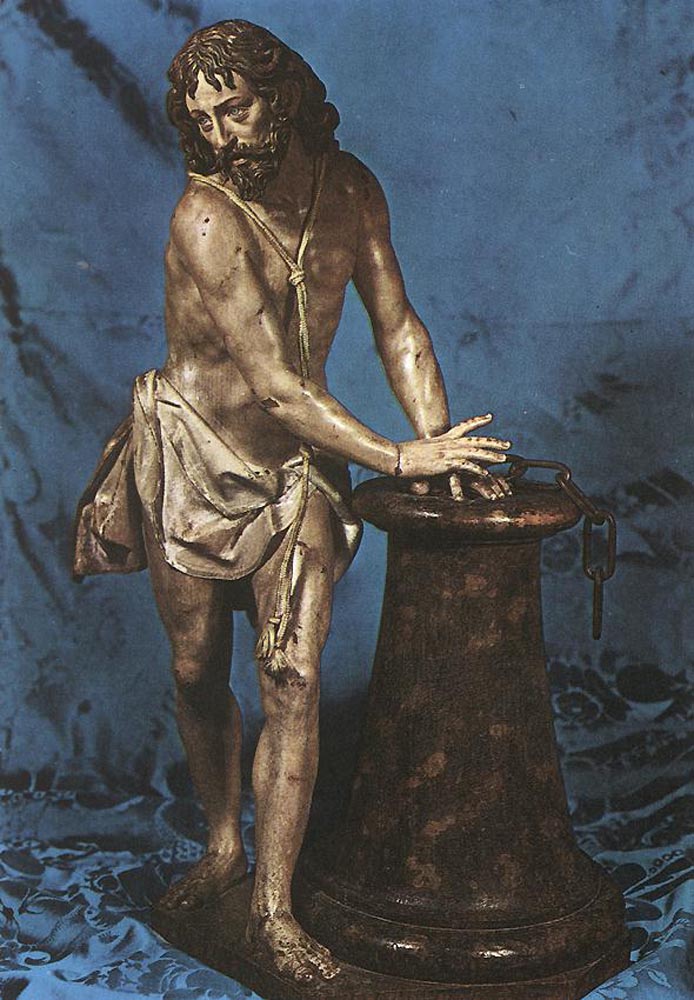 When I think of sculpture, I usually think first of something that is monochrome - in one colour, that of the material that it is made from. Perhaps stone or cast in bronze. If I think of coloured sculpture, what probably comes to mind is the kitsch stuff of gift shops. There is however, a wonderful tradition of ‘polychrome’ meaning many colours sculpture.
First, many of the statues that we now see in just stone would have originally been painted (for example the pre Renaissance sculpture of the Middle Ages. There is also a great baroque tradition of polychrome carving and some of the greatest examples are from the Spain in the 17th century.
When I think of sculpture, I usually think first of something that is monochrome - in one colour, that of the material that it is made from. Perhaps stone or cast in bronze. If I think of coloured sculpture, what probably comes to mind is the kitsch stuff of gift shops. There is however, a wonderful tradition of ‘polychrome’ meaning many colours sculpture.
First, many of the statues that we now see in just stone would have originally been painted (for example the pre Renaissance sculpture of the Middle Ages. There is also a great baroque tradition of polychrome carving and some of the greatest examples are from the Spain in the 17th century.
In the examples show, which are from this period, you can see the same stylistic features used by the stone sculptors of the time, even though these artists are not ‘painting in shadow’, as stone sculptors such as Bernini did (as I wrote about last week, here). For example, they display the same exaggerated angular folds in the cloth to give the form vigour. One of the greatest of these Spanish artists is a man called Alonso Cano.
There is an artist in Spain today who is producing work in a similar vein called Dario Fernandez. Unfortunately, I couldn’t find any images that I am able to reproduce here, but there are plenty on his website www.dariofernandez.com and he is well worth looking up.
Works shown (all from the 17th century), from top: Scourging at the Pillar, Gregorio Fernandez; John of God, Alonso Cano; The Scourging at the Pillar, Alonso Cano; Suffering Christ, Gregorio Fernandez; St Teresa of Avila, Gregorio Fernandez; Christ of Sorrows, Pedro de Mena; Crucifixion, Juan Martinez-Montanez
Lessons from Baroque Sculpture
 The first name that comes to mind when thinking of great sculptors is Bernini. When we look at his sculptures there are parallels to the baroque approach to painting. Although he is creating form in three dimensions, he still ‘paints’ in light and dark so that the baroque symbolism of the Light overcoming the darkness is there. He is quoted as having deliberately cut the lines in his statues deeper to accentuate his shadow, especially, as he said, that he did not have coloured paint to work with, only contrast of light and dark. This is why he took such care to consider that placement of his works relative to the source of light. Some artists, such as Alonso Cano and the other Spanish workers in wood of the baroque period did paint their work (hence the name ‘polychrome’ – many coloured). Unless the sculptor intends to follow Cano and paint his work then he must consider how the interplay of light and shadow in his work will affect the ability of the viewer to see what is intended.
One of the great problems that we see in modern attempts to create beautiful art is that it lacks power. The visual vocabulary of modern art has been developed to communicate what is bad. It cannot communicate goodness and truth well (ie beautifully) and retain its power, so if we try the result always seems to be sentimentality. We are all a product of our times, and will be influenced by the culture of the day whether we wish to be or not. This means the Christian artist must be especially aware of this tendency to sentimentality in his work.
The first name that comes to mind when thinking of great sculptors is Bernini. When we look at his sculptures there are parallels to the baroque approach to painting. Although he is creating form in three dimensions, he still ‘paints’ in light and dark so that the baroque symbolism of the Light overcoming the darkness is there. He is quoted as having deliberately cut the lines in his statues deeper to accentuate his shadow, especially, as he said, that he did not have coloured paint to work with, only contrast of light and dark. This is why he took such care to consider that placement of his works relative to the source of light. Some artists, such as Alonso Cano and the other Spanish workers in wood of the baroque period did paint their work (hence the name ‘polychrome’ – many coloured). Unless the sculptor intends to follow Cano and paint his work then he must consider how the interplay of light and shadow in his work will affect the ability of the viewer to see what is intended.
One of the great problems that we see in modern attempts to create beautiful art is that it lacks power. The visual vocabulary of modern art has been developed to communicate what is bad. It cannot communicate goodness and truth well (ie beautifully) and retain its power, so if we try the result always seems to be sentimentality. We are all a product of our times, and will be influenced by the culture of the day whether we wish to be or not. This means the Christian artist must be especially aware of this tendency to sentimentality in his work.
When I was learning to paint icons, my teacher Aidan Hart, told me to break curves up into a series of straight lines in order as a way of avoiding sentimentality and giving the painting rhythm and power. Later, when I was studying Western naturalism in Florence, part of my study involved drawing casts of Bernini statues. I saw that he had done something similar. The lines of drapery are usually represented not as curves, but as a series of intersecting lines (or perhaps more accurately, as series of broader arcs). It might be surprising to some that there are such parallels between iconography and the baroque, but I discovered a number which I recognised because of my exposure to both traditions. This common ground helped to reinforce the common threads of Christian art and to distinguish the naturalism of the 19th century from the baroque of the 17th century. It is why I would always say that even those artists who wish to specialize in the baroque style would benefit from learning iconography to a foundational level as well; or at the least from a study so that those stylistic features are better understood. We live in a different atmosphere from the 17th century and a clearer, more conscious recognition of what consitutes Christian culture is probably more important now than it was then, when just to be alive would have enabled people to soak up the essence of Christian culture without even thinking about it.
 The other thing that is of interest is in connection with the training and working methods of artists at that time. Bernini is known today for his dazzling technique, but at the time, his genius was considered to be the ideas and vision that he had rather than in the skill in realizing it. There were other great sculptors whose style was similar and had great skill, for example Algardi and Finelli (in fact it is his sculpture of Cardinal Scipione Borghese shown above and not Bernini's, which is right).
The other thing that is of interest is in connection with the training and working methods of artists at that time. Bernini is known today for his dazzling technique, but at the time, his genius was considered to be the ideas and vision that he had rather than in the skill in realizing it. There were other great sculptors whose style was similar and had great skill, for example Algardi and Finelli (in fact it is his sculpture of Cardinal Scipione Borghese shown above and not Bernini's, which is right).
One of my teachers in Florence, and American called Matt Collins who still lives in Italy, wrote to me about this recently. I thought I would pass on part of the correspondence, which I found interesting and surprising. He described how Bernini ran a workshop and that for a while Bernini was not the greatest technician even in his own bodega.
'Today we appreciate Bernini for his fantastic technique. However he was not the most virtuoso marble sculptor of his time. Giuliano Finelli was. Bernini employed highly skilled assistants to help realize his ideas. His 'Genius' or 'Divine gift' as it was referred to in his time was his artistic sensibility and vision. The production of art in the 17th century was a collaborative process, not the misunderstood individual against society of today. Students of the of the past were not studying but working. Art education was in fact 'on the job' training. All the assistants received the same technical training. Art evolved from it constant practice. There was always work for a competent artist, so he could risk and push himself.
'Finelli's first biographer was a man called Giambattista Passeri. He may have known personally the sculptor. Finelli was born in Carrara in 1601. The first documentation about him is from 1616 about his relation to a Michelangelo Naccherino, a sculptor based in Naples. Naccherino moved around a lot, working in Rome and even Florence. Eventually, Finelli moved to Rome around 1620 and worked in Bernini's workshop. One of the most shocking revelations is that Finelli completed a lot of the detail work on Bernini's marbles. The virtuoso leaves on Bernini's Apollo and Daphne were most likely done by Finelli. Today, we attach 'Genius' to technique. Recent revelations about 17th century art production show that virtuoso technique was only a component of great art, not the sole determiner of 'Genius.' In fact, if you look at Finelli's independent work it is not very impressive outside of the technical realm.
'Passeri is quoted as saying: "vedendo la diligenza di Giuliano si valse di lui nelle due statue di Dafne, e di Apollo, che sono nella Villa Borghese a Porta Pinciana, nelle quali oltre il buon gusto, e disegno si vede un maneggio di marmo che pare impossible, che sia opera umana, e da essa Gian Lorenzo guadagno un nome immortale."
'It is roughly translated as: "recognizing Giuliano's capability, he(Bernini) utilized him in the production of the statues Apollo and Dafne that are in the Villa Borghese at Porta Pinciana. Apart from the good taste and competent design, one sees a treatment of marble that seems impossible, let alone a work by human hands. And it is from this that Gian Lorenzo(Bernini) name became immortal."After collaborating on many projects with little compensation Finelli left Bernini's workshop in 1629.'
Matt knows more than anyone else I know about the training methods and technique of the baroque and the High Renaissance and he has taught me a great deal over the years. He has just started his own blog which publicises his own work and discusses a lot of these technical aspects in an engaging way. Those interested should look here.
This article first appeared in July 2015.
Above, Bernini's (or perhaps Finelli's!) Daphne and Apollo
Cardinal Montalto by Finelli
Detail of Bernini's Ecstasy of St Theresa of Avila, shown in full below
Baroque Landscape: Jean-Baptiste-Camille Corot
 I can only marvel at the work of French artist Corot (1796-1875). He follows that baroque format of variation in focus rendering much of out blurred and out of focus. In this respect some might liken him to the Impressionists who followed him. But to my eye he differs in that he retains the sense of a sharp focus. There are enough edges and sharp contrasts for give the roving eye places to rest comfortably. Corot was part of movement of landscape painters, called the 'Barbizon' (after a village near Fontainbleau Forest where they gathered). They consciously modelled their work on John Constable's landscapes and ideas. Constable's work had been popular in France and he had exhibited his work there. I think that my comments on his approach are, not surprisingly, similar to those I made in regard to Constable. For example, he tends to work tone into the natural colour of what is being painted, greens, for example, of the landscape. However, Corot seems to have developed further what Constable did and is perhaps even more masterly in his ability to combine all these competing considerations in a unified beautiful image. His rendering of foliage and especially the appearance of trunks and branches within the form of the tree or shrub is immensely skilfull. I would refer those who haven't read them to my other articles on baroque landscapes in previous weeks. Beyond the general comments about landscape I have very little to say other than just enjoy the beauty of his work.
Baroque Landscape
I can only marvel at the work of French artist Corot (1796-1875). He follows that baroque format of variation in focus rendering much of out blurred and out of focus. In this respect some might liken him to the Impressionists who followed him. But to my eye he differs in that he retains the sense of a sharp focus. There are enough edges and sharp contrasts for give the roving eye places to rest comfortably. Corot was part of movement of landscape painters, called the 'Barbizon' (after a village near Fontainbleau Forest where they gathered). They consciously modelled their work on John Constable's landscapes and ideas. Constable's work had been popular in France and he had exhibited his work there. I think that my comments on his approach are, not surprisingly, similar to those I made in regard to Constable. For example, he tends to work tone into the natural colour of what is being painted, greens, for example, of the landscape. However, Corot seems to have developed further what Constable did and is perhaps even more masterly in his ability to combine all these competing considerations in a unified beautiful image. His rendering of foliage and especially the appearance of trunks and branches within the form of the tree or shrub is immensely skilfull. I would refer those who haven't read them to my other articles on baroque landscapes in previous weeks. Beyond the general comments about landscape I have very little to say other than just enjoy the beauty of his work.
Baroque Landscape
Baroque Landscape: Chinese Baroque!
Romantic Baroque: the Landscapes of William Turner
19th Century Baroque: the Landscaps of John Constable
The Landscapes of John Constable
 There are two difficulties with baroque landscape. First was the inclination in the 17th century baroque to represent those areas where the colour is muted in sepia. This meant that they very often gave the appearances of very deep shadow everywhere that was not the primary focus of interest. Second was the technical difficulty in describing the form of trees and foliage. It may sound like a small thing, but anyone who has ever tried to paint trees will know that they are fiendishly difficult to represent. The artist must give the sense of a united form, like a sponge, but also of one composed of many individual leaves. The paintings of trees from the earlier period tended, to my eye, to look to 'feathery'. They focussed too much on the detail and not enough on the overall form. Turner overcame this in an idiosyncratic way by adopting the colour theories of Geothe for his tonal representation and, as far as I can see, avoiding painting any trees at all! Other artists overcame this problem by representing the tonal areas in a muted version of the original colour. So, in landscape this usually means toned down greens - grey greens, blue greens, brown greens although sometimes retaining sepia for deep shadow when the composition requires it. As with Turner, the choice depends upon two factors: consideration of whether or not the area being painted is in sunshine or shadow; and how far in the distance the area is. Distance and degree of illumination both of these factors affect our perception of colour and tone and so these two variable must be reflected in any scheme that the artist devises. John Constable (1776-1837) is happy to use compositions that involve deep shadow in the foreground and he uses sepia for these areas. But he also renders areas in sunshine well. He also seemed happy to turn his hand to a wide variety of landscapes and seascapes. His watercolours or sketches, painted in situ are of interest to the modern eye (or mine at least) because of the spontaneity with which they are rendered. These would not have been considered finished works of art at the time but preparatory works for the pictures done in the studio.
There are two difficulties with baroque landscape. First was the inclination in the 17th century baroque to represent those areas where the colour is muted in sepia. This meant that they very often gave the appearances of very deep shadow everywhere that was not the primary focus of interest. Second was the technical difficulty in describing the form of trees and foliage. It may sound like a small thing, but anyone who has ever tried to paint trees will know that they are fiendishly difficult to represent. The artist must give the sense of a united form, like a sponge, but also of one composed of many individual leaves. The paintings of trees from the earlier period tended, to my eye, to look to 'feathery'. They focussed too much on the detail and not enough on the overall form. Turner overcame this in an idiosyncratic way by adopting the colour theories of Geothe for his tonal representation and, as far as I can see, avoiding painting any trees at all! Other artists overcame this problem by representing the tonal areas in a muted version of the original colour. So, in landscape this usually means toned down greens - grey greens, blue greens, brown greens although sometimes retaining sepia for deep shadow when the composition requires it. As with Turner, the choice depends upon two factors: consideration of whether or not the area being painted is in sunshine or shadow; and how far in the distance the area is. Distance and degree of illumination both of these factors affect our perception of colour and tone and so these two variable must be reflected in any scheme that the artist devises. John Constable (1776-1837) is happy to use compositions that involve deep shadow in the foreground and he uses sepia for these areas. But he also renders areas in sunshine well. He also seemed happy to turn his hand to a wide variety of landscapes and seascapes. His watercolours or sketches, painted in situ are of interest to the modern eye (or mine at least) because of the spontaneity with which they are rendered. These would not have been considered finished works of art at the time but preparatory works for the pictures done in the studio.
This is speculation on my part, but I wonder if this use of watercolour especially as the means of capturing the moment is influential the form of the finished works of the artists of this time. The finished studio based work will have been a composite of detail from a number of spontaneous sketches - and so in this case oil paint copies of watercolours. Turner almost seemed to use oil paint as though he was painting in watercolour - lots of thin washes.
Constable is one of the first that I know of to be able to render the balance of broad form and detail in foliage and trees well. He simultaneously represents the broad shape through light and dark, and provides some detail without overloading it, importantly, in a way that allows that mind to infer what the whole is comprised of. This is one of a series of article intended to read as such: Baroque Landscape Baroque Landscape: Chinese Baroque! Romantic Baroque: the Landscapes of William Turner Paintings above, from top: Lighthouse at Harwich; Wivenhoe Park
View of Salisbury
Cornfield
Weymouth Bay
Brighton Beach with Colliers
Romantic Baroque: the Landscapes of William Turner
 It might seem contradictory that the landscapes of the Romantic movement (with which William Turner’s work is usually associated) are so beautiful. The Romantics of the 18th and 19th century were responsible in many ways for destroying the traditional forms that preceded them and opened the way to ugliness of modern art. Their emphasis on personal feelings and especially intense emotion of the artist is contrary to the traditional idea of painting in conformity to objective standards for the greater glory of God.
There is a desire to communicate emotion in the baroque also, but it is not the emotion of the artist that is emphasized. Rather, it is the emotion of the person painted or sculpted that is portrayed. Bernini’s St Theresa of Avila, for example, reveals her emotional state, not his.
It might seem contradictory that the landscapes of the Romantic movement (with which William Turner’s work is usually associated) are so beautiful. The Romantics of the 18th and 19th century were responsible in many ways for destroying the traditional forms that preceded them and opened the way to ugliness of modern art. Their emphasis on personal feelings and especially intense emotion of the artist is contrary to the traditional idea of painting in conformity to objective standards for the greater glory of God.
There is a desire to communicate emotion in the baroque also, but it is not the emotion of the artist that is emphasized. Rather, it is the emotion of the person painted or sculpted that is portrayed. Bernini’s St Theresa of Avila, for example, reveals her emotional state, not his.
Subjectivity is not necessarily a bad thing however: when those subjective feelings coincide with what is objectively true, there is the possibility of something good. Broadly speaking, this is the case for Romantic landscapes, provided the desire of the artist is to communicate the beauty of nature (and other things being equal). The training the artists received in the 18th and 19th centuries was essentially the same as that from the previous period: which was an adaptation of the academic method - originally developed for the study of the human person -for landscape. It transmitted the baroque visual vocabulary of form without departing from core Christian principles (although steadily becoming more and more detached from a Christian understanding of them).
 As mentioned before, baroque landscape employed control of focus and intensity of colour that corresponded to the way that the human person naturally perceives the world around him. The inclination in the 17th century baroque was to represent those areas where the colour is muted in sepia. This meant that they very often gave the appearances of very deep shadow everywhere that was not the primary focus of interest. This of course, is not always appropriate. To overcome this artists started to become more sophisticated in the range of colours they used for those areas rendered tonally.
As mentioned before, baroque landscape employed control of focus and intensity of colour that corresponded to the way that the human person naturally perceives the world around him. The inclination in the 17th century baroque was to represent those areas where the colour is muted in sepia. This meant that they very often gave the appearances of very deep shadow everywhere that was not the primary focus of interest. This of course, is not always appropriate. To overcome this artists started to become more sophisticated in the range of colours they used for those areas rendered tonally.
The great English artist, William Turner developed a striking answer to the problem. Drawing on the colour theory of Goethe, he developed a system in which he rendered form tonally, but in a variety of colours rather than just sepia. It is not easy to discern a strict format, but broadly speaking and as best as I have been able to discern it, in the foreground he used yellow for those areas in sunlight, and red through to deep red ochre and finally sepia for shadow. Then those areas that are in the distance he used blues for sunlight and, violets and blacks for shadow. All this is varied subtly dependant also upon the natural colour of the objects. The skill needed to combine all of this and yet still give the painting an impressional unity is immense. What I have described applies to land, building and trees. His skies are rendered in blues, greys and if painting sunsets, red and yellow; and seas in this system seem to sit between the two because the water reflects the light of the sea and land.
It appears to me that in many of his watercolours, which would be painted quickly, he relies on this more (perhaps he is developing and perfecting the technique through them). In his oil paintings he uses this variation but the control is more subtle – after all the background areas, which these are, should be subordinate to the main foci of interest, which are going to be rendered more literally.
 Another feature of Turner’s art is the reduction of the area which is sharp focus (with a corresponding decrease in the areas which are painted blurred. The out-of-focus areas are painted as though in peripheral vision. Turner used to practice painting his peripheral vision. This accounts for the looseness of many of his works. However, he never abandons the points of focus altogether. The oil painting Snowstorm, left, for example, is almost all blurred blizzard, there is, nevertheless the sharp line of a mast and a daub of bright colour for the boat, so that the eye has somewhere to rest. Many of his later oils are painted as thin washes of colour, mimicking his watercolour method there are many of these in Tate Britain museum in London - I am not sure if Turner considered all of them finished although to the modern eye they look splendid.
Another feature of Turner’s art is the reduction of the area which is sharp focus (with a corresponding decrease in the areas which are painted blurred. The out-of-focus areas are painted as though in peripheral vision. Turner used to practice painting his peripheral vision. This accounts for the looseness of many of his works. However, he never abandons the points of focus altogether. The oil painting Snowstorm, left, for example, is almost all blurred blizzard, there is, nevertheless the sharp line of a mast and a daub of bright colour for the boat, so that the eye has somewhere to rest. Many of his later oils are painted as thin washes of colour, mimicking his watercolour method there are many of these in Tate Britain museum in London - I am not sure if Turner considered all of them finished although to the modern eye they look splendid.
What is interesting is that to my knowledge the colour theory of Goethe is not consistent with ideas of modern physics, yet it works well in Turner’s paintings. It may be a lucky inspiration (or perhaps there is something to Goethe after all!). Regardless of the validity of Goethe’s theories, the success of the paintings is a tribute to Turner’s great skill and intuitive sense of what works once he has painted it.
The paintings shown are watercolours except for Snowstorm, above and the two at the bottom of the series below, which are oils.
The Landscapes of John Singer Sargent
 John Singer Sargent (1856 - 1925) may well be the last great artist in the academic tradition. He was an American, born in Florence in Italy and who spent much of his life in Europe. He was prolific, painting hundreds of oil paintings and thousands of watercolours and sketches. Painting alongside the Impressionists (and sometimes referred to as one) he has clearly incorporated their sense of shimmering light. He copes well with sunlight and shadow and the balance between general impression and focus on particular detail (especially in regard to foliage). His compositional style is affected, again like the Impressionists, by Japanese landscape prints, and so he generally provides a focus in the foreground, large and near to the viewer. Although, as I mentioned, he is often grouped with the Impressionists, in my opinion he is superior because he retains that balance of focus and soft edge that one associates with a baroque style (the Impressionist tending towards an even blurr).
The spontaneity of his watercolours is wonderful and because the medium forces him to summarise far more, it gives us an insight into how he looked at what was in front of him.
John Singer Sargent (1856 - 1925) may well be the last great artist in the academic tradition. He was an American, born in Florence in Italy and who spent much of his life in Europe. He was prolific, painting hundreds of oil paintings and thousands of watercolours and sketches. Painting alongside the Impressionists (and sometimes referred to as one) he has clearly incorporated their sense of shimmering light. He copes well with sunlight and shadow and the balance between general impression and focus on particular detail (especially in regard to foliage). His compositional style is affected, again like the Impressionists, by Japanese landscape prints, and so he generally provides a focus in the foreground, large and near to the viewer. Although, as I mentioned, he is often grouped with the Impressionists, in my opinion he is superior because he retains that balance of focus and soft edge that one associates with a baroque style (the Impressionist tending towards an even blurr).
The spontaneity of his watercolours is wonderful and because the medium forces him to summarise far more, it gives us an insight into how he looked at what was in front of him.
Interestingly, Sargent had no faith at all, to my knowledge. He is one of those people who just seems to have been naturally open to inspiration in his painting. God inspires whomsoever He pleases!
Sargent was a very popular society portrait painter and his focus on the personalities of those he paints always comes through. His more conventional portraits, incidentally are wonderful too, and you can see why he was in demand, but that’s for another day.
Corfu
Baroque Landscape: Chinese Baroque!
 This is another in the series about baroque landscape…and its not about baroque landscape, but bear with me. It is relevant to the topic. I am fascinated by the beauty of Chinese landscape. Once I started to learn about the baroque style I noticed that the same basic features are present in the form of Chinese art too. Further investigation revealed that the traditional Doaist understanding of the natural world and man’s relation to it, as manifested in Chinese art, are in accord in many ways with the Catholic worldview.
Considering form first: if we look at any of the paintings shown here we see these features. There are a limited number of principle foci of interest which are more detailed and more coloured. The areas in between these are muted in colour and rendered in monochrome, usually black and grey ink washes.
In fact in Chinese painting the contrast in the treatment of the focal points and background areas is even more pronounced. The areas between the foci are often no more than a hazy mist. However, there is always a unity to the painting. It looks like a single scene not painting containing three unconnected scenes.
This is another in the series about baroque landscape…and its not about baroque landscape, but bear with me. It is relevant to the topic. I am fascinated by the beauty of Chinese landscape. Once I started to learn about the baroque style I noticed that the same basic features are present in the form of Chinese art too. Further investigation revealed that the traditional Doaist understanding of the natural world and man’s relation to it, as manifested in Chinese art, are in accord in many ways with the Catholic worldview.
Considering form first: if we look at any of the paintings shown here we see these features. There are a limited number of principle foci of interest which are more detailed and more coloured. The areas in between these are muted in colour and rendered in monochrome, usually black and grey ink washes.
In fact in Chinese painting the contrast in the treatment of the focal points and background areas is even more pronounced. The areas between the foci are often no more than a hazy mist. However, there is always a unity to the painting. It looks like a single scene not painting containing three unconnected scenes.
I began to investigate a bit and read a book called The Mustard Seed Garden Manual of Painting. This was written in China in the 1600s (which, coincidentally, is the baroque period in the West). What struck me is that their understanding of the natural world and how man relates to it is in accordance with the Christian worldview. The Daoist worldview does not include God, but it does recognize heaven, a place that is non-material. The natural world reflects a heavenly order and the task of man and his work is to act in harmony with it. Therefore, just like the Christian painters of the same period, they saw the beauty of the natural world as something that pointed to a place beyond it that was non-material. When we apprehend the beauty of nature, we perceive intuitively the harmonious relationships that exist between the parts; and the harmonious relationship of the whole to God (for the Christian), and to heaven (for the Daoist). As a Catholic I say that all harmony is derived from the harmonious relationships that are intrinsic to God, between the persons of the Trinity.
Compare, for example, two quotes that follow. The first by St Thomas Aquinas and the second by the Chinese sage, Lao Tzu:
‘The order of the parts of the universe to each other exists in virtue of the order of the whole universe to God’ St Thomas Aquinas (Questiones disputatae de veritate, 7,9)
‘Man’s standards are conditioned by those of Earth, the standard of Earth by those of Heaven, the standard of Heaven by that of the Way [Tao] and the standard of the Way is that of its own intrinsic nature.’ Lao Tzu, (from Tao Te Ching, XXV, 6th century BC)
 It seems strange to me, that with their view of an ‘empty’ heaven they did not, historically at least, welcome the revelation of a God. It is though they had already deduced the existence of heaven but with an empty throne, and Christianity could provide the only King who is worthy to sit on it. Christ even told us that he is ‘the Way’ (John 14:6)
It seems strange to me, that with their view of an ‘empty’ heaven they did not, historically at least, welcome the revelation of a God. It is though they had already deduced the existence of heaven but with an empty throne, and Christianity could provide the only King who is worthy to sit on it. Christ even told us that he is ‘the Way’ (John 14:6)
So, coming back to painting, when they painted a landscape they sought to capture its beauty by mimicking the way that man observes nature. Again, this is just like the baroque method.
The landscape tradition is much older in the China than in Europe, and I would say that this representation of the balance between the particular and the whole was at a much more mature in Chinese art than in the baroque landscapes of this period. Part of the training of any artist should be the study of the work of Masters in their tradition. Any artist wishing to specialize in landscape could benefit from the study of Chinese landscapes, I suggest, even if the ultimate aim is a Western form.
This has happened in the past. There has always been an easy crossover between Chinese and Western naturalistic landscape painting. Nineteenth century French landscape artists, especially the Impressionists, were fascinated by Chinese and Japanese landscape and incorporated many compositional elements into their own work.
It works the other way too. To demonstrate the point, I should now come clean and explain that not all the paintings in this article were painted by a traditional Chinese artist. The second is, but the first and third are by a classically trained Italian artist, who was also a Jesuit missionary to China in the mid-eighteenth century, called Giuseppe Castiglione. He was admired in China for his work and was patronized by the Emperor. I first came across his work at an exhibition at the Royal Academy a couple of years ago.
The first painting below is by Castiglione again. The others are by a contemporary artist, Henry Wo Yue-Kee, based in Alexandria, Virginia. He was sitting in a shop front working one day when I walked past and noticed him. He told me that he had moved here from Hong Kong where he was trained.
I found this link through to short description of Castiglione's life and 40 images of his work (as reproduced on the stamps of China, Taiwan and Korea!)
The Baroque Landscape
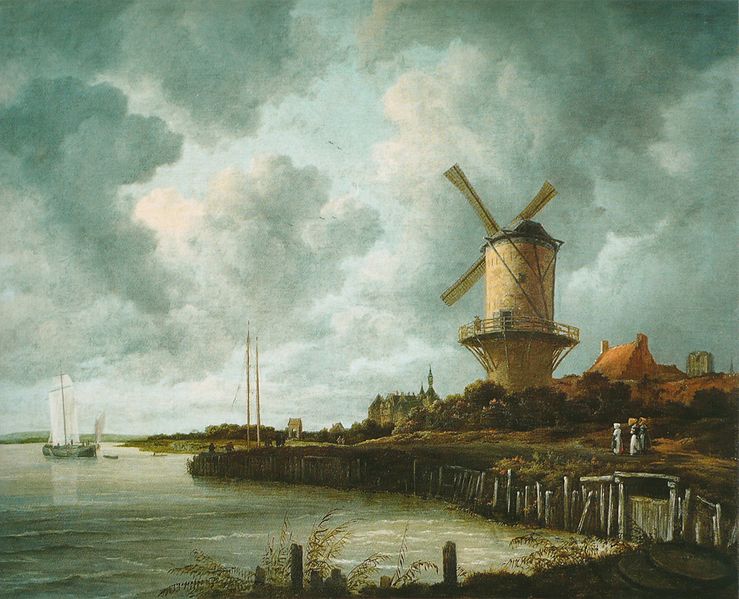 After the 17th century, the sacred art of the academies, the baroque, declined. Landscape however, is an aspect of baroque art that not only did not decline, but actually developed in a way that was true to the original principles right through to the end of the 19th century. I will outline the basic form of landscape that established in the 17th century.
The form of the baroque landscape is based upon an assumption that mankind is the greatest of God’s creatures and has a uniquely privileged position within it. The rest of creation is made by God, so that we might know him through it. Creation’s beauty calls us to itself and then beyond, to the Creator. Man is made to apprehend the beauty of creation.
After the 17th century, the sacred art of the academies, the baroque, declined. Landscape however, is an aspect of baroque art that not only did not decline, but actually developed in a way that was true to the original principles right through to the end of the 19th century. I will outline the basic form of landscape that established in the 17th century.
The form of the baroque landscape is based upon an assumption that mankind is the greatest of God’s creatures and has a uniquely privileged position within it. The rest of creation is made by God, so that we might know him through it. Creation’s beauty calls us to itself and then beyond, to the Creator. Man is made to apprehend the beauty of creation.
To illustrate, I quote from a section of Psalm 148: ‘Praise the Lord from the earth, sea creatures and all oceans, fire and hail, snow and mist, stormy winds that obey his word; all mountains and hills, all fruit trees and cedars…’
 None of these aspects of God’s creation is capable of responding to call of the psalm literally. The ‘praise’ is not theirs, but ours. Their beauty inspires and directs our praise. This is one purpose for it. The natural world is not just a collection of atoms conforming to the laws of physics and chemistry. All that it does, through grace, is in conformity to its divine purpose. Having said that, we live in a fallen world. Creation is beautiful yet, amazingly, because of the Fall, it is not as beautiful as it ought to be.
None of these aspects of God’s creation is capable of responding to call of the psalm literally. The ‘praise’ is not theirs, but ours. Their beauty inspires and directs our praise. This is one purpose for it. The natural world is not just a collection of atoms conforming to the laws of physics and chemistry. All that it does, through grace, is in conformity to its divine purpose. Having said that, we live in a fallen world. Creation is beautiful yet, amazingly, because of the Fall, it is not as beautiful as it ought to be.
When man interacts with creation (when farming or gardening, for example) he should remember this part its divine purpose and so his work with it should be beautiful too, serving to restore it more fully to fulfillment of what it was meant to be. This is why farmland is profoundly natural and when we farm well (as with anything done well) the result is beautiful.
Once this is accepted then the Christian artist who is painting the landscape should seek to reveal all these truths about Creation. As with all art this is done by consideration of both the content and the form.
The baroque landscape artist, just as I described in my piece about still lives - here - paints in such as way that it gives us information in the way that we naturally look to receive it. As the eye roves around any scene, we spend more time on those aspects which are of greater interest. Our interest reflects the natural hierarchy of being. So we are more interested in farmland than untouched areas, in animal rather than plant life, and more interested in man than a animals. The composition of the painting ought to reflect this. Even if a person is apparently a minor element in a rural scene, the artist should be aware that it is a detail that will catch the eye of the observer.
 The form reflects this too. The artist varies the focus and the intensity of colour. (Again for more detail on this see the previously mentioned article.) Those areas that give the greatest amount of visual information are in sharpest focus and have the greatest colour and these are made the primary foci of the painting. The areas of least interest are rendered in monochrome and out of focus. The beauty of the painting depends upon a harmonious arrangement of these principle foci of interest (usually no more than three or four).
The form reflects this too. The artist varies the focus and the intensity of colour. (Again for more detail on this see the previously mentioned article.) Those areas that give the greatest amount of visual information are in sharpest focus and have the greatest colour and these are made the primary foci of the painting. The areas of least interest are rendered in monochrome and out of focus. The beauty of the painting depends upon a harmonious arrangement of these principle foci of interest (usually no more than three or four).
This is never easy but it can be easier in some situations than others. Consider the painting of Susanna Fourment by Rubens, left. This is set in a landscape, but because it is really just a backdrop of what is intended to be a portrait, he has it in a loose focus, largely tonal description.
The baroque developed firstly as a form of sacred art, with a focus on the human person and quickly mastered how to apply these principles to that subject. The greatest focus is in the area of the face and especially the eyes of the individual. (See this article on portraiture for more detail.)
When faced with a beautiful view in all its complexity – beyond anything a man is capable of reproducing exactly – the artist is forced to summarise. He will select those areas of greater interest and supply more detail and colour in these; visually summarise to a greater degree those areas of secondary interest.
 The big problem is the one that is there for all Christian art – the balance of the particular and the general. While clouds in the sky, for example, can be represented as large forms, the problem is particularly acute with the representation of foliage. Trees, shrubs, grassland have to be represented as a collection of the particular: we are aware that a tree, for example, has many individual leaves and this must be indicated; and the general form: a tree forms a massed, cloud-like shape that must be seen as such as well.
The big problem is the one that is there for all Christian art – the balance of the particular and the general. While clouds in the sky, for example, can be represented as large forms, the problem is particularly acute with the representation of foliage. Trees, shrubs, grassland have to be represented as a collection of the particular: we are aware that a tree, for example, has many individual leaves and this must be indicated; and the general form: a tree forms a massed, cloud-like shape that must be seen as such as well.
The Dutch artists, who were not Catholic and so had less of a focus on sacred art, applied these principles to landscape with greater energy. Although I love the Dutch landscapes of this period, my personal feeling is that even they never mastered these problems in every respect with regard to foliage. If we look at the landscape by Ruisdael of Bentheim castle, above right, the trees are too feathery. There is too much focus on the particular and not enough of the general. Future articles will describe how later artists overcame this problem.
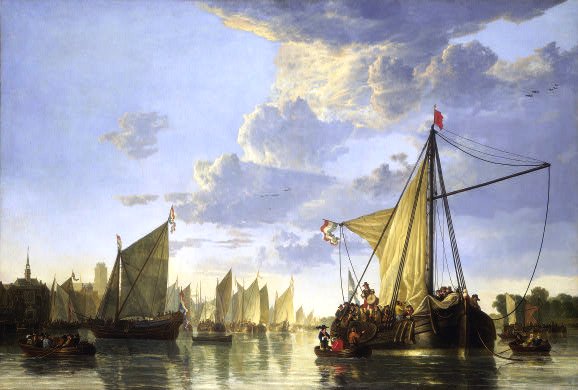 Seascapes pose a different problem, somewhat easier to overcome. The sea and clouds in the sky are more easily seen as large forms (though still requiring great skill to portray successfully if one wishes to conform to the baroque ideals). If we place a boats can be the foci, even in the distance, and then the sky and the sea can be made secondary to the composition and toned down and put evenly out of focus.
Seascapes pose a different problem, somewhat easier to overcome. The sea and clouds in the sky are more easily seen as large forms (though still requiring great skill to portray successfully if one wishes to conform to the baroque ideals). If we place a boats can be the foci, even in the distance, and then the sky and the sea can be made secondary to the composition and toned down and put evenly out of focus.
The great Dutch painter Aelbert Cuyp seemed to get around the problems by avoiding trees. He painted wonderful seascapes (see example above left) His pastoral scenes tend to be fields, or even cows standing the water! Nevertheless looking at his painting below, we see the classic baroque variation in focus and colour with even the grass pale brown except in the focal points.
The other problem relates to the variation in colour. As I mentioned, those areas of least interest are rendered tonally. The baroque tradition, with its emphasis coming from the language of light and dark in sacred art, tended to render the tonal areas in sepia, changing to blue for distant areas. The reliance on sepia works well for portraits, but landscapes with large tonal impressions sepia always give the impression of being deep shadow. It makes it difficult to paint a bright sunny day. All these paintings appear to me as though the shadows are in deep shaded woodland. Later artist began to vary the base colour of these tonal areas to blue-greys and green-greys rather than sepia. We will see in later articles how later artists, such as Corot, overcame this. It took some time for them to do so. Looking, below, at the landscape (and portrait) of a later British artist, Thomas Gainsborough, who although working in the 18th century nevertheless continued for the most part to paint in the classic baroque form, we still see this deep sepia shadow and feathery portrayal of tree foliage.
Other paintings shown are top, windmill and seascape by van Ruisdael; and second from top, Landscape with Rainbow by Rubens
Some More about Henry Wingate, his work and the traditional style he paints in
 Continuing in the tradition of the Boston School of portraitists, and the baroque.
Following on from the last post, I thought that readers might be interested to see some more work of artist Henry Wingate, and to know more about the academic method that he uses to such great effect. I like his portraits especially and he is one of relatively few artists around today who is making a real contribution to a re-establishment of traditional principles by teaching as well as painting (motivated by a desire to serve the Church).
Continuing in the tradition of the Boston School of portraitists, and the baroque.
Following on from the last post, I thought that readers might be interested to see some more work of artist Henry Wingate, and to know more about the academic method that he uses to such great effect. I like his portraits especially and he is one of relatively few artists around today who is making a real contribution to a re-establishment of traditional principles by teaching as well as painting (motivated by a desire to serve the Church).
Based in rural Virginia, Wingate studied with Paul Ingbretson in New England and with Charles Cecil, in Florence, Italy. Both Ingbretson and Cecil studied under R H Ives Gammell, the teacher, writer, and painter who perhaps more than anyone else kept the traditional atelier method of painting instruction alive.
The academic method was first developed in Renaissance Italy and was the basis of transmission of the baroque style (described by Pope Benedict XVI as one of three authentically Catholic liturgical artistic traditions, along with the gothic and the iconographic). The method is named after the art academies of the seventeenth century. The most famous early Academy was opened by the Carracci brothers, Annibali, Agostino, and Ludivico, in Bologna in 1600. Their method became the standard for art education and nearly every great Western artist for the next 300 years received, in essence, an academic training.
 Under the influence of the Impressionists the method almost died out. They consciously broke with tradition and refused to pass it on to their pupils. This is strange given that all the well known Impressionists were themselves academically trained, used the skills they learned in their art and in fact could not have produced the paintings they did without it. By 1900 the grand academies of Europe had closed. The fact that it survives at all is largely the legacy of the Boston group of figurative artists of the late 19th and early 20th centuries, most prominent among them John Singer Sargent (who was trained in Paris, but knew them and mixed with them). Other names are Joseph de Camp, Edmund Tarbell and Emil Grundmann. The US was slower to adopt the destructive ideas of Europe and the traditional schools survived there a little longer. Ives Gammell received his training at Boston Museum of Fine Arts in the years just before the First World War. The most well know ateliers that exist today in the US and Italy, were opened by artists who trained under Gammell in the 1970s (when he was in his 80s). Most of people painting and teaching in this style today, that I know of, come out of this line.
Under the influence of the Impressionists the method almost died out. They consciously broke with tradition and refused to pass it on to their pupils. This is strange given that all the well known Impressionists were themselves academically trained, used the skills they learned in their art and in fact could not have produced the paintings they did without it. By 1900 the grand academies of Europe had closed. The fact that it survives at all is largely the legacy of the Boston group of figurative artists of the late 19th and early 20th centuries, most prominent among them John Singer Sargent (who was trained in Paris, but knew them and mixed with them). Other names are Joseph de Camp, Edmund Tarbell and Emil Grundmann. The US was slower to adopt the destructive ideas of Europe and the traditional schools survived there a little longer. Ives Gammell received his training at Boston Museum of Fine Arts in the years just before the First World War. The most well know ateliers that exist today in the US and Italy, were opened by artists who trained under Gammell in the 1970s (when he was in his 80s). Most of people painting and teaching in this style today, that I know of, come out of this line.
 The ateliers of the 19th century had become detached from their Christian ethos and the sacred art of the period was inferior to that of the period 200 years before. However, portraiture, and especially that of the Sargent and the Boston School retained the principles of the balance of sharpness and focus, the variation in colour intensity and the contrast in light and dark that characterized the baroque. Today, even portraiture has declined (Wingate and his ilk being exceptions to this) because very often it is based upon photographic images rather than observation from nature. Photographs reflect the distortion of the lens of the camera, which is different from that of the eye; they have too many sharp edges and everywhere is both highly detailed and highly coloured. Consider, for example, how Wingate has handled the drapery in the portrait at the top, left. He has not supplied a fully detailed rendering, yet there is not a sense of a lack of detail because when we look at the figure, which is what Wingate wants us to look at, the detail supplied is sufficient for our peripheral vision.
The ateliers of the 19th century had become detached from their Christian ethos and the sacred art of the period was inferior to that of the period 200 years before. However, portraiture, and especially that of the Sargent and the Boston School retained the principles of the balance of sharpness and focus, the variation in colour intensity and the contrast in light and dark that characterized the baroque. Today, even portraiture has declined (Wingate and his ilk being exceptions to this) because very often it is based upon photographic images rather than observation from nature. Photographs reflect the distortion of the lens of the camera, which is different from that of the eye; they have too many sharp edges and everywhere is both highly detailed and highly coloured. Consider, for example, how Wingate has handled the drapery in the portrait at the top, left. He has not supplied a fully detailed rendering, yet there is not a sense of a lack of detail because when we look at the figure, which is what Wingate wants us to look at, the detail supplied is sufficient for our peripheral vision.
If you go somewhere where you can see a series of portraits painted over long period (perhaps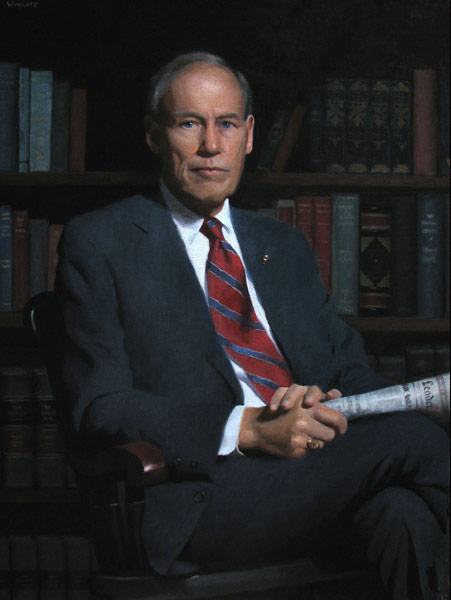 those of the principals hanging in the dining hall of a long-established school or college - I recently went to a dinner at the Roxbury Latin School in Boston - founded in the 17th century), you can see this difference between the traditional and the modern portraits very easily.
those of the principals hanging in the dining hall of a long-established school or college - I recently went to a dinner at the Roxbury Latin School in Boston - founded in the 17th century), you can see this difference between the traditional and the modern portraits very easily.
I am not against photographic portraits by the way, far from it. The point is that it is a different medium to painting, to which we respond differently. These Christian considerations can be communicated through photography, in my opinion, but they have to be done differently. (And if there are any photographers out there, I think that relating the art of photography to the Christian tradition of visual imagery is an area that has not yet been properly developed.) The point here is that paintings made from photographs rarely work unless the artist is conscious of these stylistic considerations and has the skill and experience to adapt what the photographic information.
The retention of these principles in 19th-century portrait painting was not due to a Christian motivation, to my knowledge. If a portrait painter is to make a living then he cannot indulge in the free expression that one might see in other forms. The portrait painter, Christian or not, must seek to balance two things. First, he must produce a painting that is attractive to those who are going to see it, usually the individual and those who know him or her. The usual approach to this is to bring out the best human characteristics of the person. He is ennobling - idealizing - the individual. However, he cannot take this too far and go beyond the bounds of truth. He must also capture the likeness of the individual otherwise it will not be recognized as a portrait. My teacher in Florence, Charles Cecil, taught us not to be bound by an absolute standard of visual accuracy, but to modify what we saw, slightly. We were told to stray ‘towards virtue rather vice’: strengthen the chin slightly, for example. This approach is consistent with the Christian artist’s portrayal of a person, which is as much about revealing what a person can be, as what he is. The idea that the crucial aspect by which the artist reveals the person is by capturing the likeness goes back to St Theodore the Studite, the Church Father whose theology settled the iconoclastic controversy in the 9th century.
For the work of Henry Wingate, see www.henrywingate.com.
Paintings of Popes and Saints John XXIII and John Paul II by Clemens Fuchs
Here are paintings of the recently canonized saints by Clemens Fuchs, who is an Austrian artist trained in the academic method. He was studying at the Charles H Cecil when I was there about 10 years ago and later taught there (along with another artist who has been featured on this site and some may remember, Matt Collins). You can read more about Clemens at his website http://www.clemensmariafuchs.com/. The church, incidentally is St Charles Church ( that's St Charles Borromeo), a splendid baroque church in Vienna.
Is some sacred art too naturalistic?
 There are many artists today working towards the reestablishment of the great naturalistic tradition of sacred art which was at its height in the 17th century, and this is to be encouraged. The artists coming out of the ateliers and studios that teach the traditional academic method who are adding greatly to this cause, and while there are some great painters of portrait and still life, I think that very often there is something wrong with the sacred art that they paint.
Someone recently asked me about this. He felt that they looked too individualised - like portraits of the person next door, which makes it difficult to identify the figure portrayed with the saint and the ideals that the saint represents. Is it possible that these modern examples of sacred art are too naturalistic he asked?
There are many artists today working towards the reestablishment of the great naturalistic tradition of sacred art which was at its height in the 17th century, and this is to be encouraged. The artists coming out of the ateliers and studios that teach the traditional academic method who are adding greatly to this cause, and while there are some great painters of portrait and still life, I think that very often there is something wrong with the sacred art that they paint.
Someone recently asked me about this. He felt that they looked too individualised - like portraits of the person next door, which makes it difficult to identify the figure portrayed with the saint and the ideals that the saint represents. Is it possible that these modern examples of sacred art are too naturalistic he asked?
I think that the answer is yes. All Christian figurative art is a balance between naturalism – likeness to physical appearances – and abstraction. The latter is the stylization that enables the artist to reveal invisible truths by visible means. We are used to a high degree of stylization in icons, but are less aware that is there too, though more subtly employed, in naturalistic sacred art too. The problem with the modern sacred art is that most people who are trained academically today are trained to paint the human person as portrait painters. The balance between naturalism and idealism is differs - what is right for portraits, is not right for sacred art.
I think perhaps the seeds of this lie in the difference between 19th century academic art, which is a degraded from of the baroque of the 17th century, which is an authentic Christian tradition (although at first glace they look similar).
Most of the best artists today who are painting in the Western naturalistic tradition were trained in ateliers that teach the academic method as it was in the 19th century. Although the techniques learnt were the same in each case, the there were subtle differences in style between 19th century naturalism (sometimes called ‘Realism’) and 17th century baroque and this reflects a difference in the ethos that underlies each. The impetus for the formation of the baroque was the Counter-Reformation, which built on the work of the great artists of the High Renaissance, which preceded it. Although not all baroque art had an explicitly sacred purpose, stylistically it had its roots firmly in the liturgical art form.
By the 19th century, the art of the teaching academies – ‘academic’ art - had become detached from its Christian ethos. So although there would be individual artists who were Catholic, it was no longer broadly accepted as a Catholic form. In this period, in regard to the painting of people, the main focus was portraiture, as this was where the money was to be made, rather than liturgical art. That is not to say that there was no sacred art all, but that portraiture became the driving force and so this is what formed the style. Characterising the difference in a nutshell: in the 17th century, you had artists whose training was directed to the painting of sacred art turning their hand to portraiture (and other mundane subjects); in the 19th century (and even more so today) you have the reverse – artists whose training is directed to portraiture (as well as still life and to a lesser degree landscape) turning their hand to sacred art.
Portrait painting, by its very nature, stresses the individual characteristic of the person. The Romantic period of the early 19th century added a new dimension. The artist was encouraged now to communicate in addition, their personal feelings about the person. This idea was not accepted by everybody immediately, but from this point we see a steady development of a sense of intimate involvement with the sitter. I do not object this to this in all cases -- I think it can work very well in portraiture. I love the portraits of the great 19th century artists (especially, for example, those of the American Boston school, which is the original source of the training I received in an atelier in Florence 100 years later). Although the unique aspects of the person are important in sacred art too, it must not be at the cost of communicating those aspects which are common to all of us. Those are the aspects of a saint that are of greatest interest to the rest of us sinners - for only the only aspects that we can emulate are those that are common to all of us.
We are made in the image and likeness of God. We are in the likeness of God in those aspects that are subject to the Fall and so can be improved with God's grace. These are the very aspects that saints reveal to us as an ideal and which are presented to us as an inspiration to do the same. In this they point to the Christ-like qualities that we should all aim to imitate. It is this idealized aspect that, in my opinion, is missing from the academic art both of the 19th century and it is even more pronounced in its current manifestation. The result in the context of sacred art is very often a painting that communicates an over-familiarity with the individual. It looks like a set from a Victorian melodrama – with a friend or relative dressed up as Our Lady, rather than Our Lady herself.
Contrast also William Bougeureau’s Virgin and Lamb [above], painted at the turn of the 20th century with Raphael’s tondo the Alba Madonna of 1511 [below].
Raphael deliberately idealized his work, to evoke the heavenly ideal, by basing it on the idealized features of ancient Greek art. Bougeureau’s Madonna, on the other hand, is tinged with a sentimentality that is, in my opinion, inappropriate for the subject which result, I believe, from this over intimate rendering of the person. However, looking another piece of work by the same artist, but this time a portrait, we see a work of both great vigour and beauty.
His style is appropriate here, I feel.
As another piece that has this staged-pose look, I would cite also Jules Bastien-Lapage's St Joan [below].
Bastien-Lepage was famous for painting rural scenes of peasants. Although rendered with dazzling skill (perhaps beyond the level of any artist I know of today) it still has the look of a model, dressed up in peasant garb rather than something that points to the saint. I would struggle to pray in front of this in a church. It is just too present and immediate. And, like Bougeureau, for all the weaknesses of this as a piece of devotional art, Bastien-Lepage's portraits are, in my opinion, splendid.
In naturalistic art it is appropriate to communicate strongly the emotions of the subject painted (in contrast with icons for example, where it is less true). We read emotions of people by looking at their faces and by gesture. It occurs to me that perhaps one of the reasons that the baroque stresses gesture so strongly is that it provides a way of communicating emotion without requiring the observer to focus there attention so strongly on the face and so hightening too much the uniqueness of the person.
So assuming we accept the analysis, how can we avoid it this problem today? I think that the answer lies in the training.
The style within a tradition has always been transmitted by the Masters we study. So, artists seeking to produce should study and copy, in the spirit of understanding, the works of the Masters of liturgical art they admire. Although I love the work of Raphael, and there are many aspects of his work I love to be able to emulate, I would not want to do so in this particular regard – if anything he swings in the opposite direction and the idealization is overemphasized for my tastes. I would go first for the great artists of baroque naturalism, for example, Georges de la Tour [below], Velazquez, Ribera and Zurbaran [below the de la Tours].
All of these artists, (the examples shown are de la Tour's St Joseph and Zurbaran's St Francis) presented saints with a balance of the individuality and idealisation that strikes the right balance. If there was a more recent artist whose sacred art succeeds, I would suggest the 20th century Italian, Pietro Annigoni. I saw his St Joseph [below] hanging in a church in Florence alongside baroque masters and despite its modern appearance in many other respects, it did not look out of place at all.
There is another aspect that could be introduced into the training of all artists that wasn’t present in the 17th century, but which nevertheless might help. Artists cannot help but be influenced by the art we have seen and we live in time in which we are bombarded by photographic imagery in all its manifestations. As a result the subtleties of the balance of the particular and the ideal that we are discussing are not easily reproduced even if we want to. I think that some exposure to a form of painting in which the idealized form is much more obvious and is clearly linked to theology would be beneficial. I would always recommend, therefore, that even an artist who eventually wants to specialize in the Western naturalistic tradition include some iconography in their foundational training. The actual experience of creating icons is more likely to impress these values upon the souls of artists so that intuitively they will include them in their own work.








